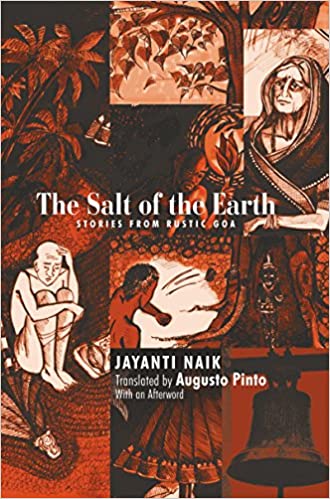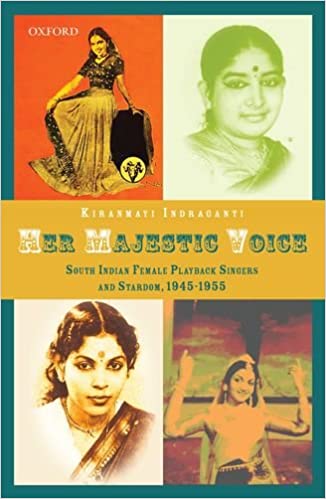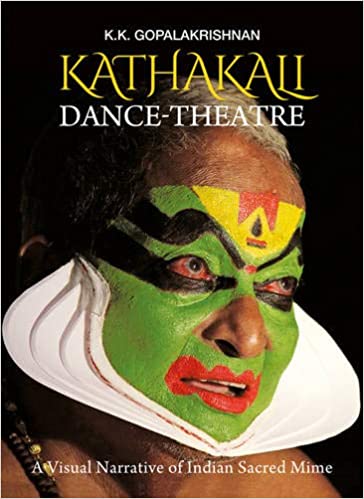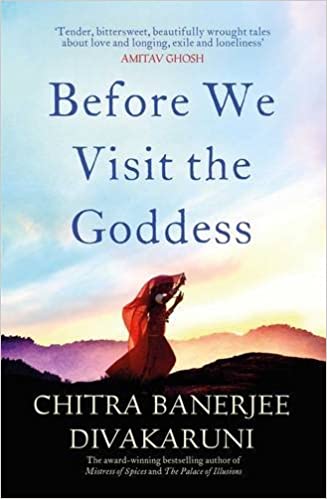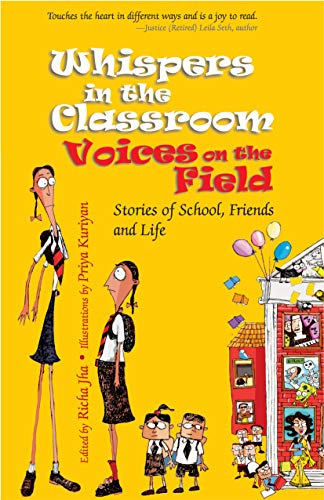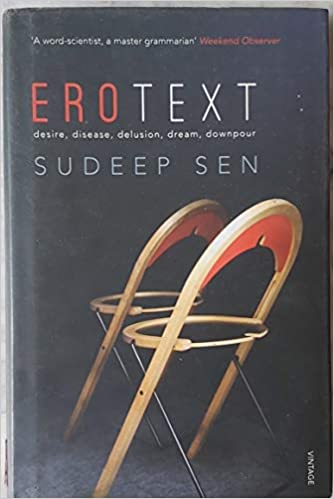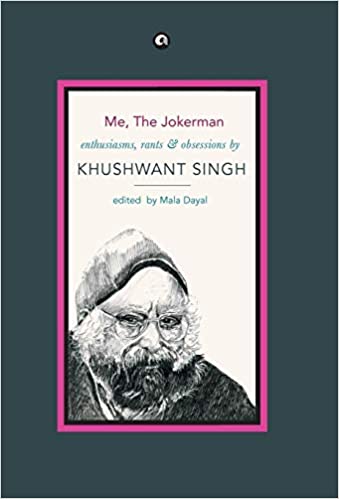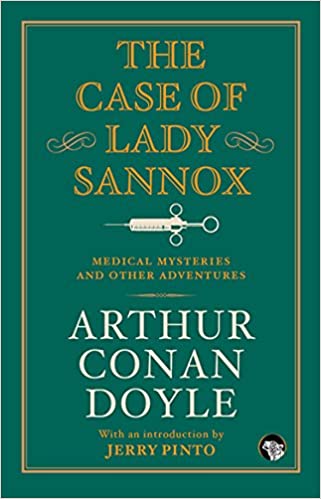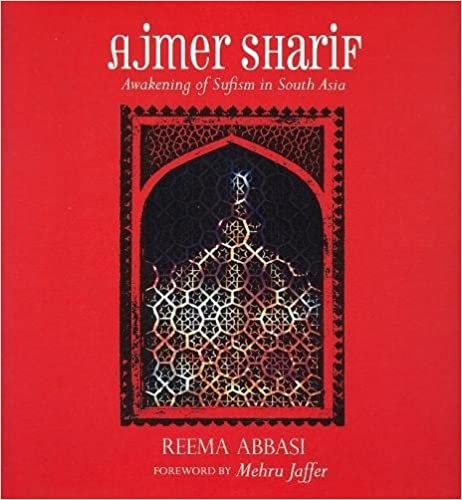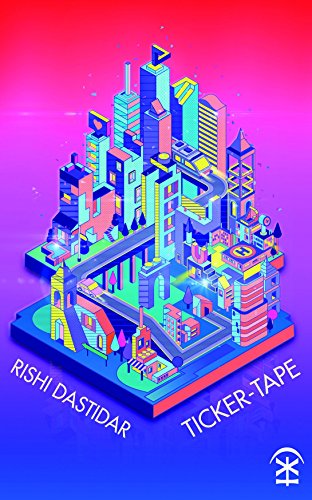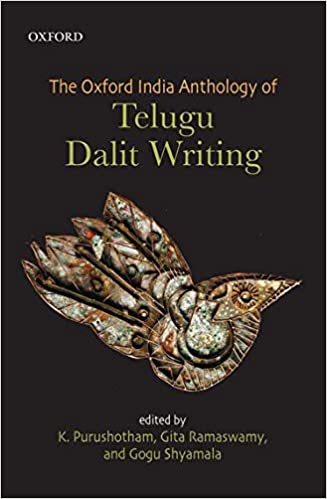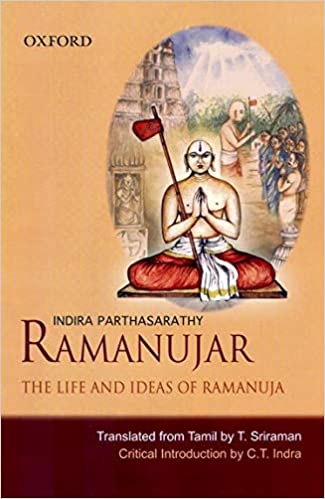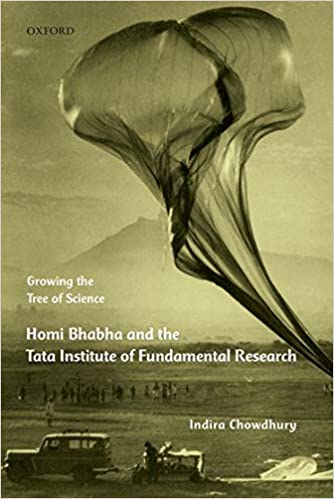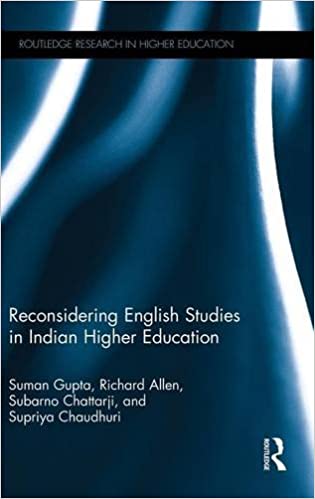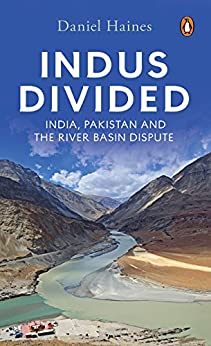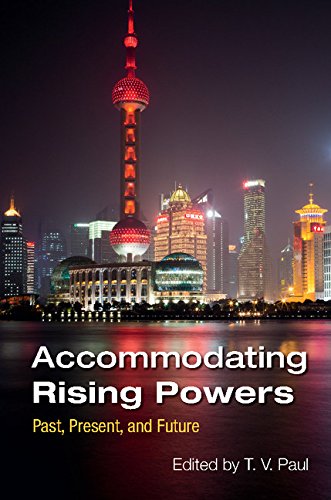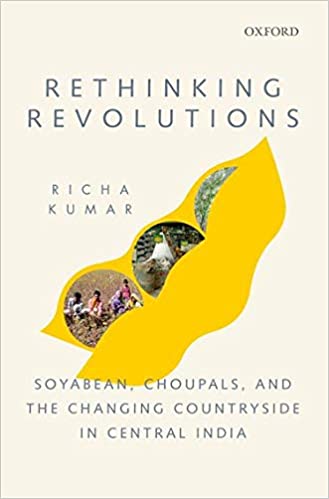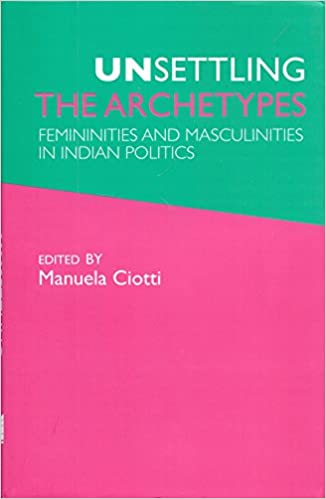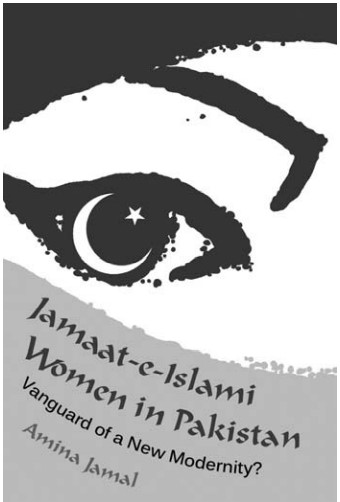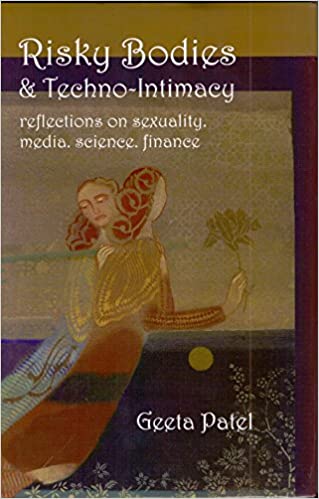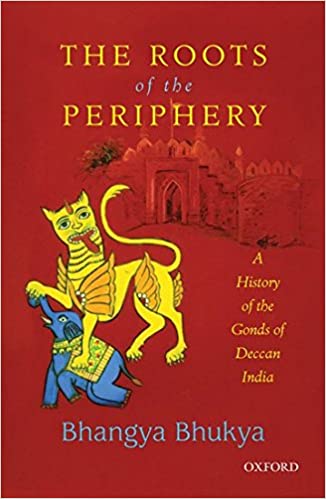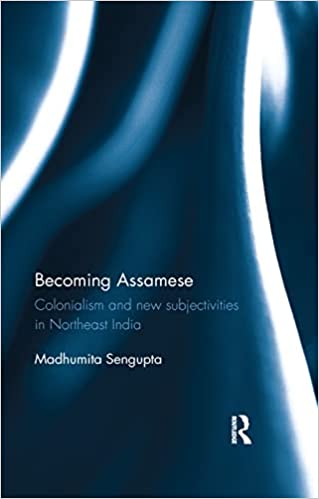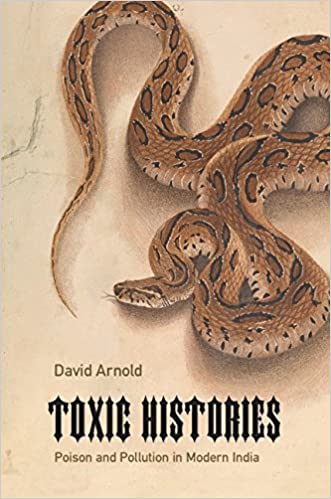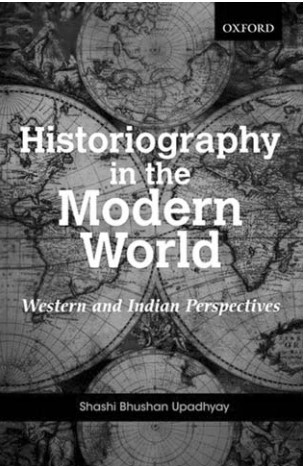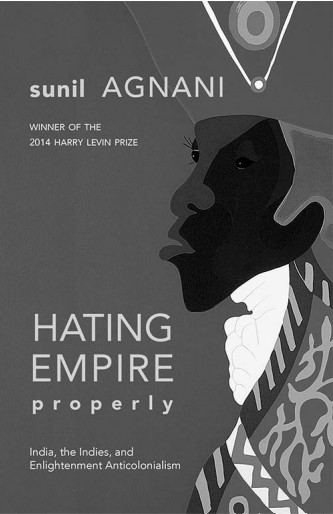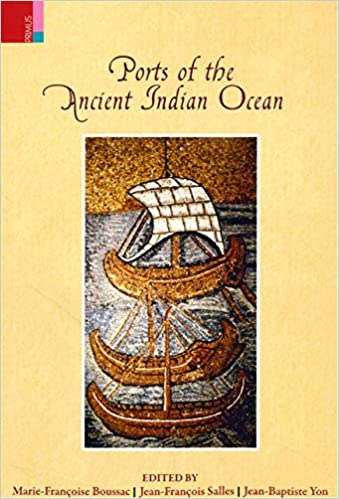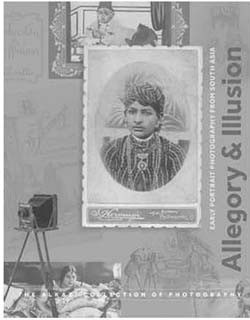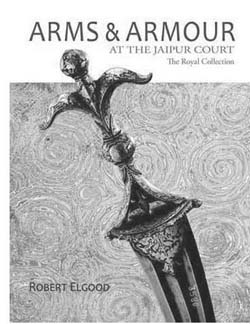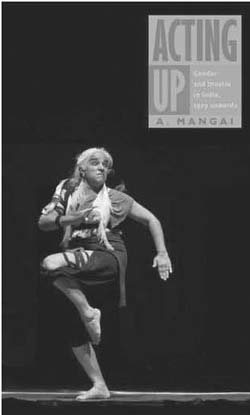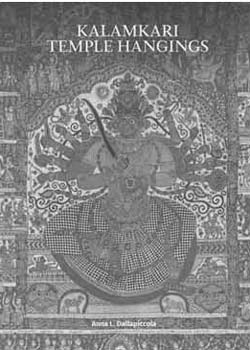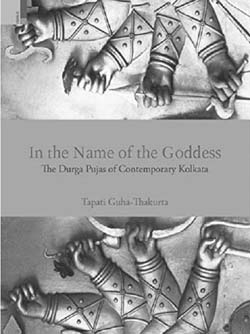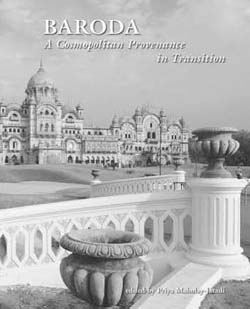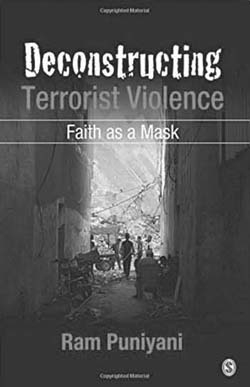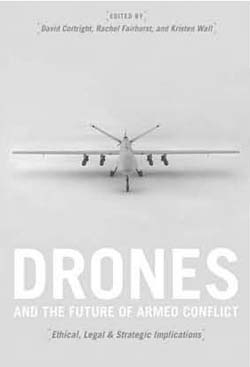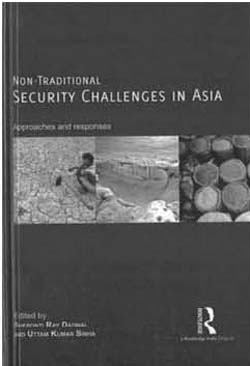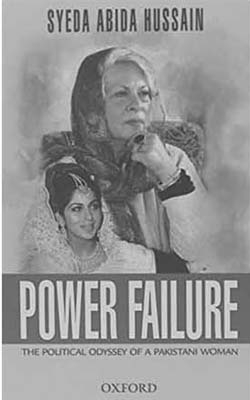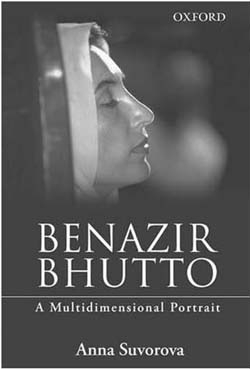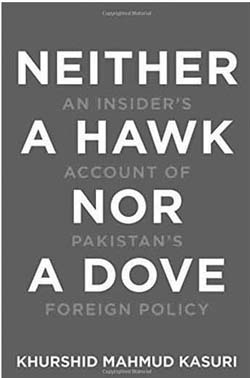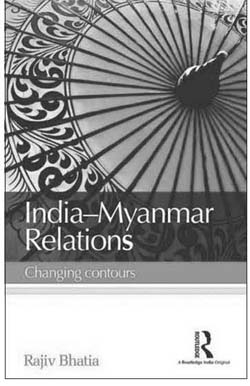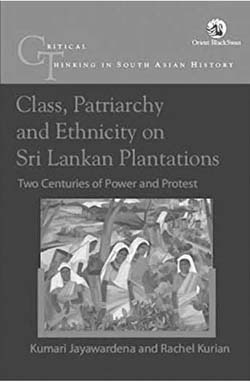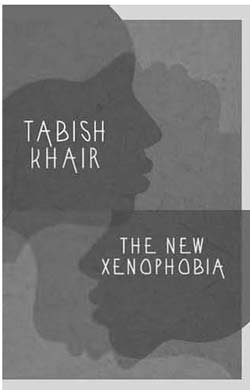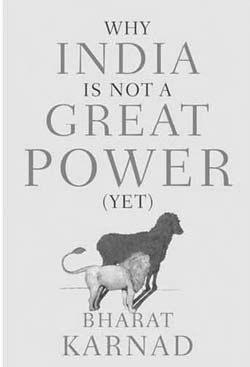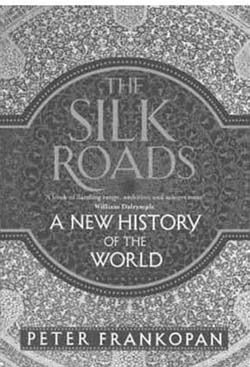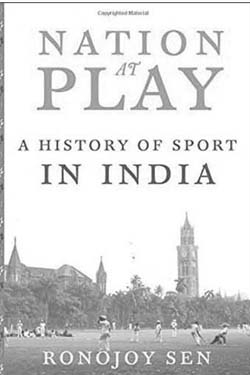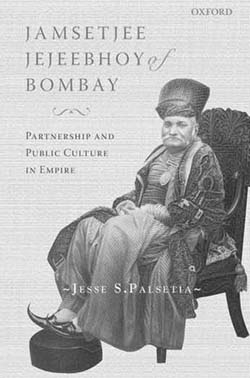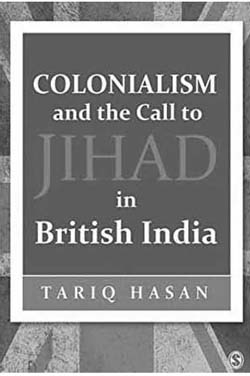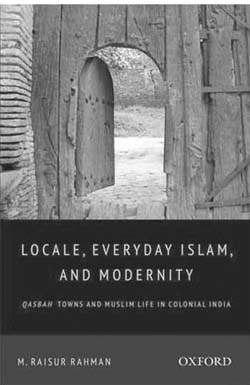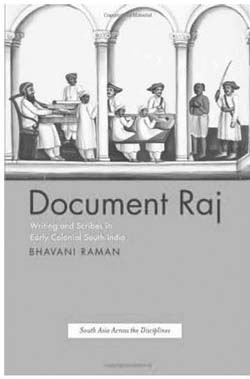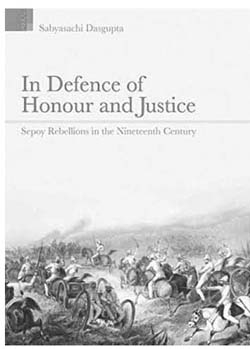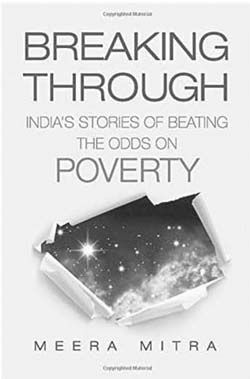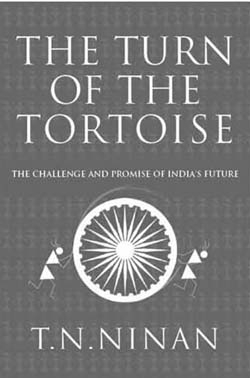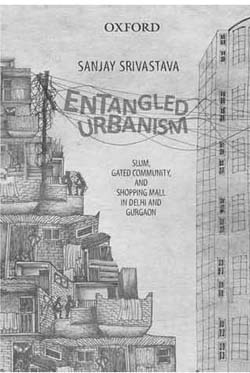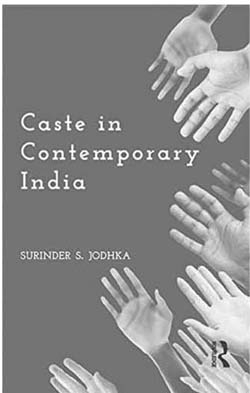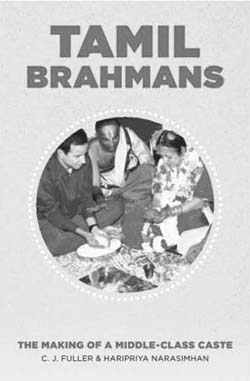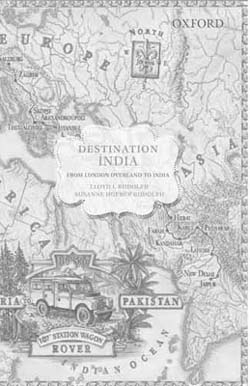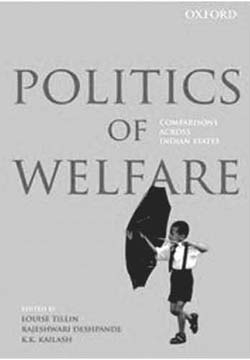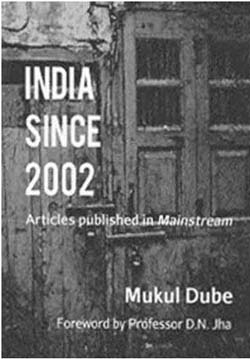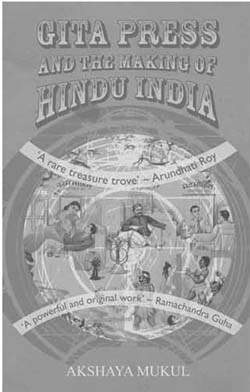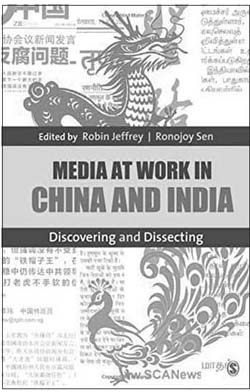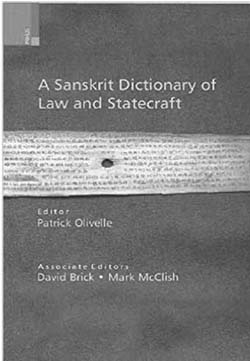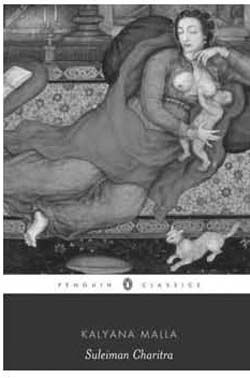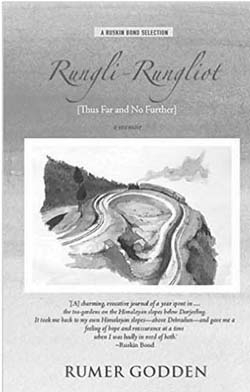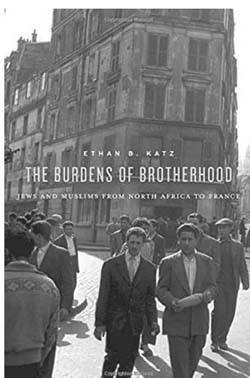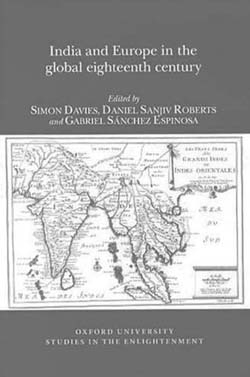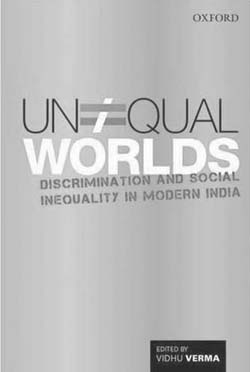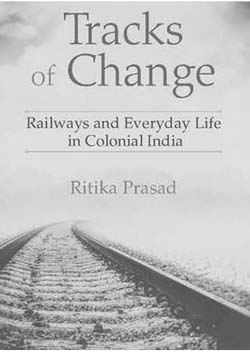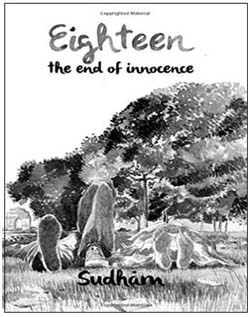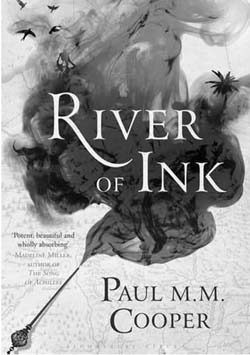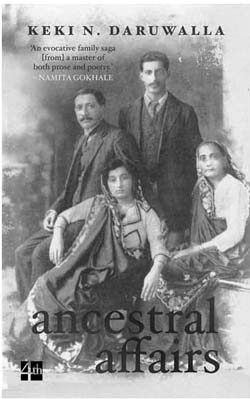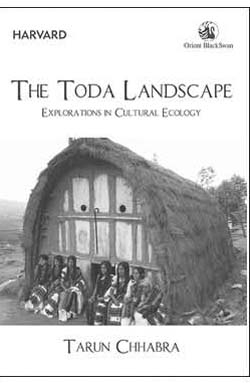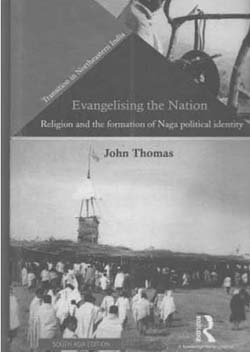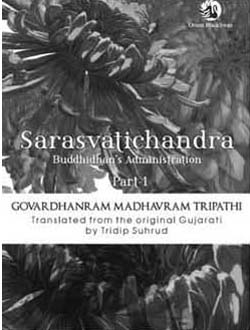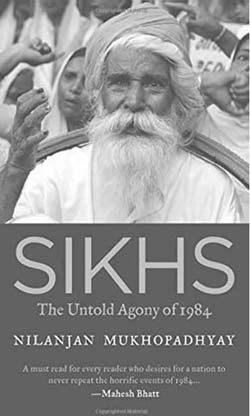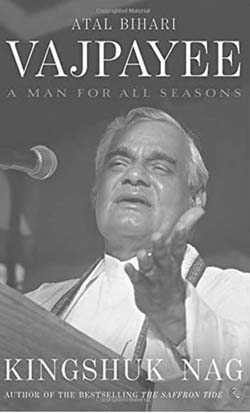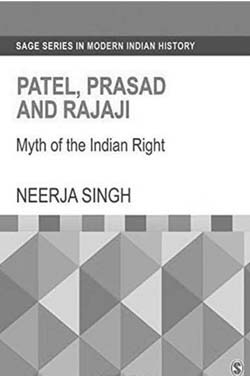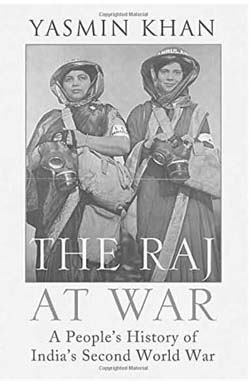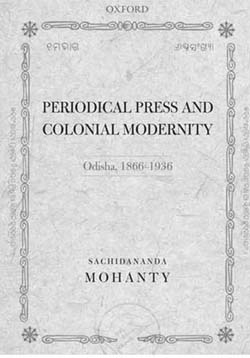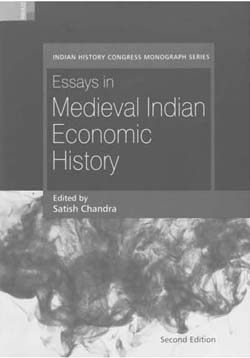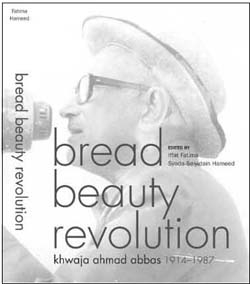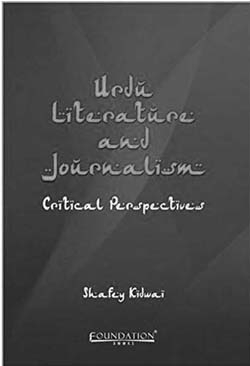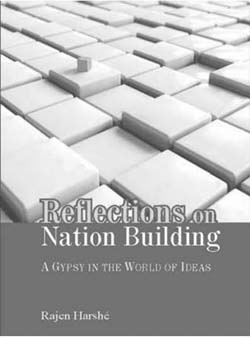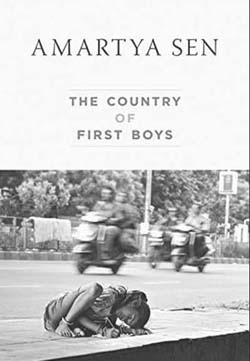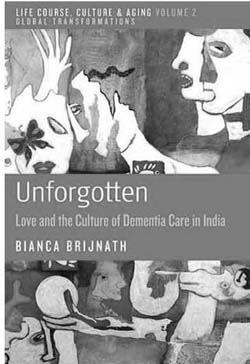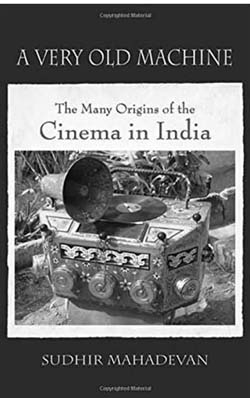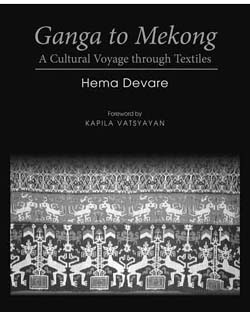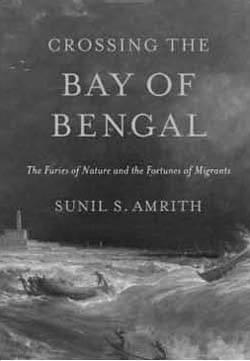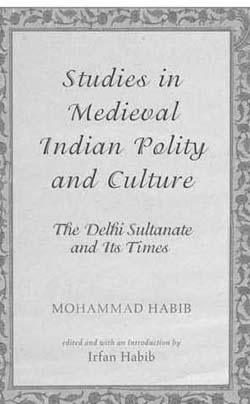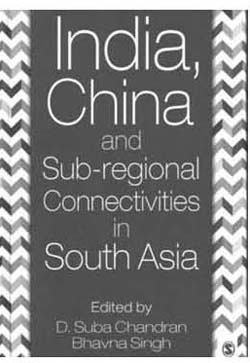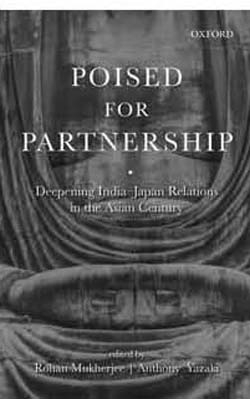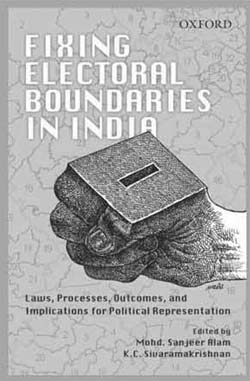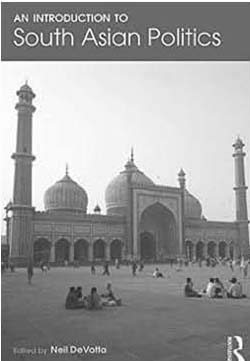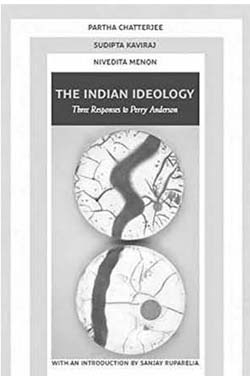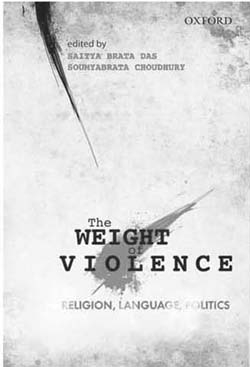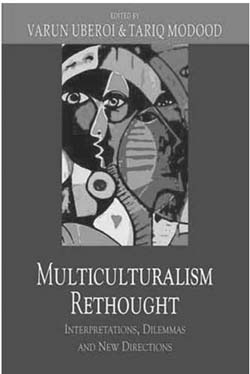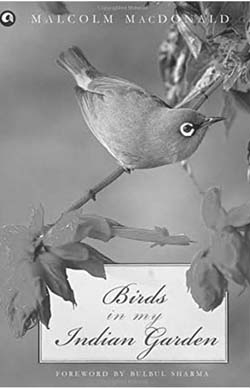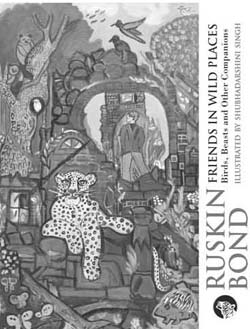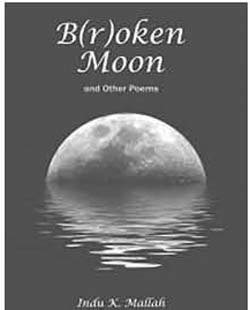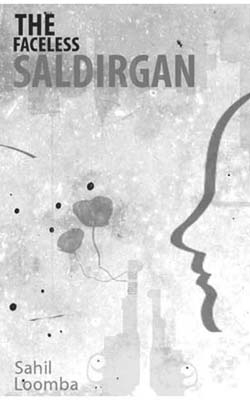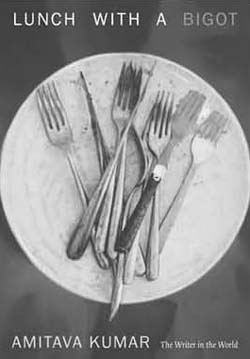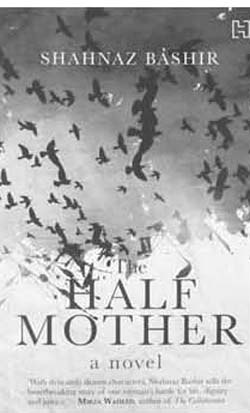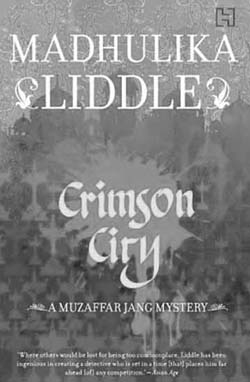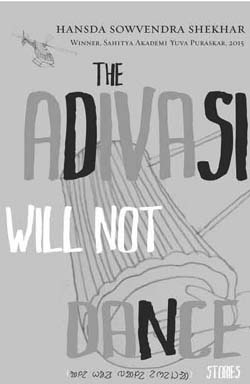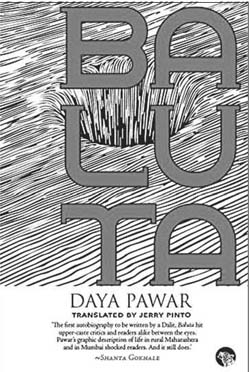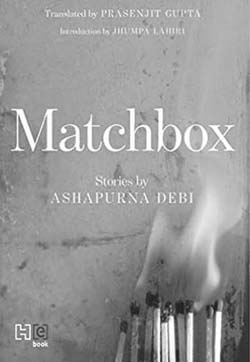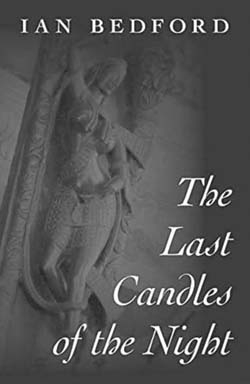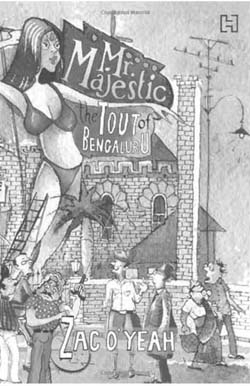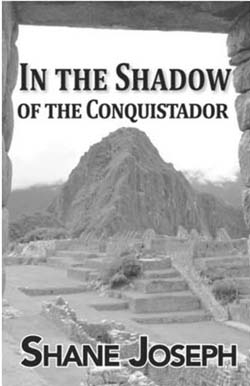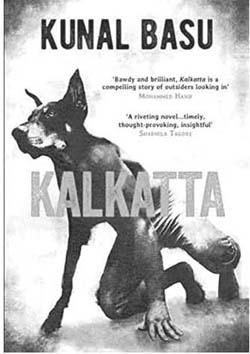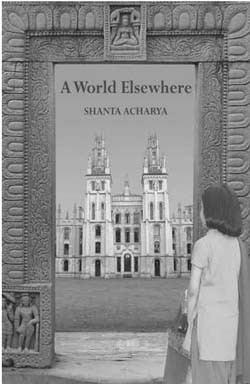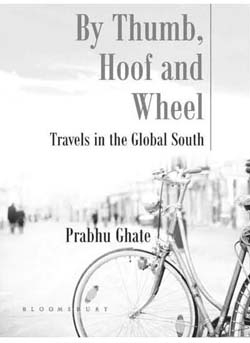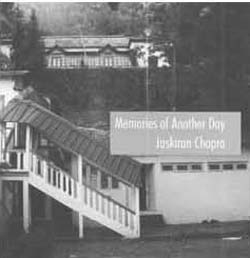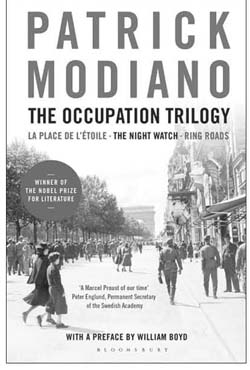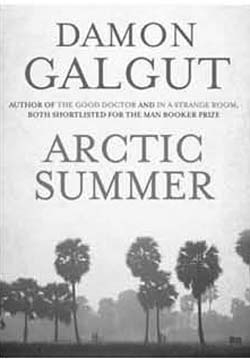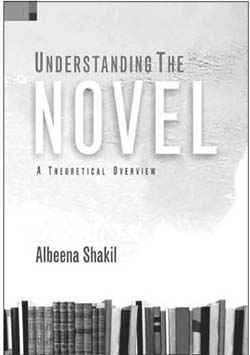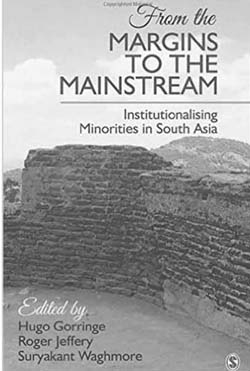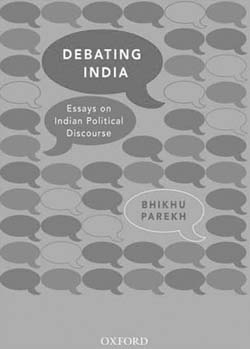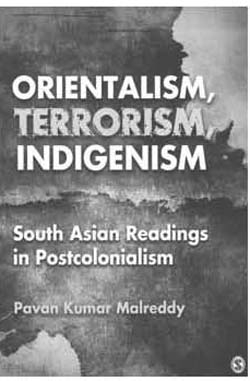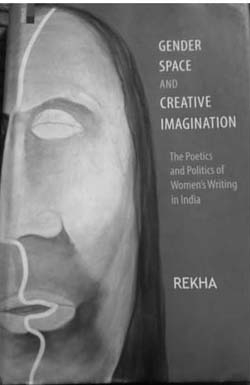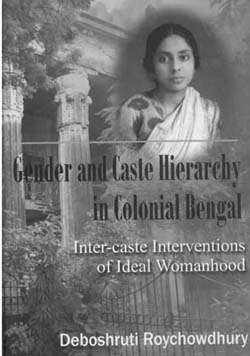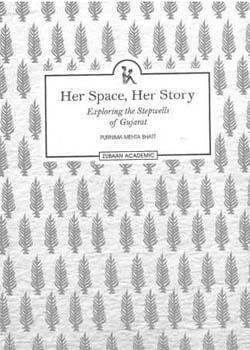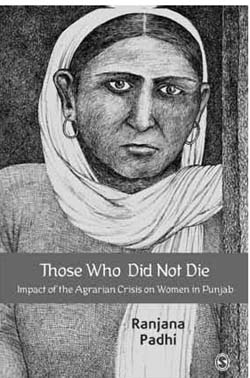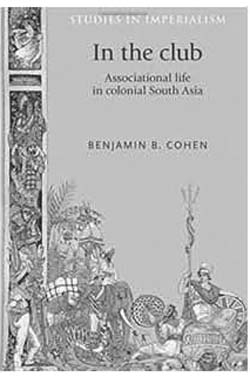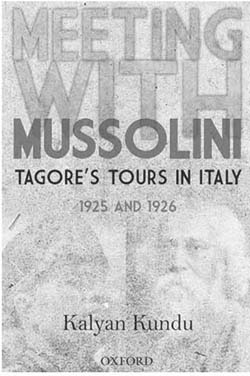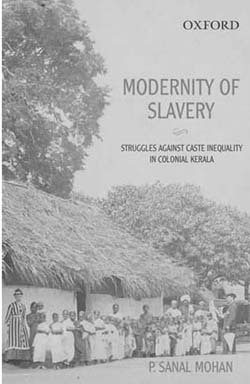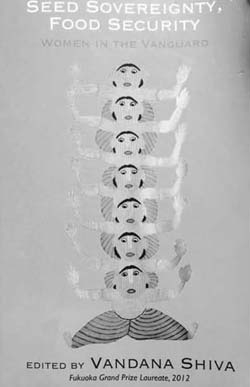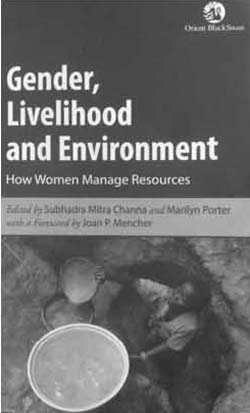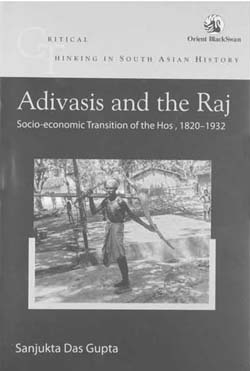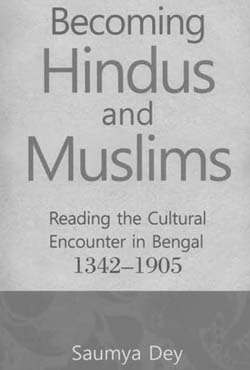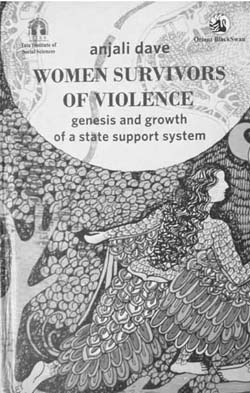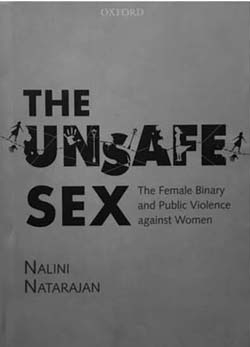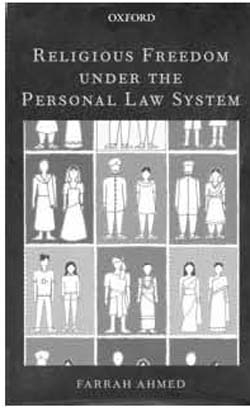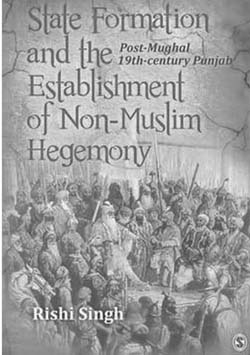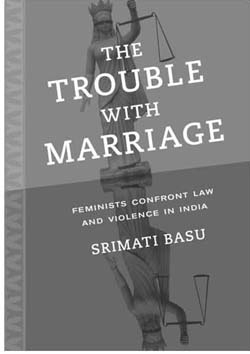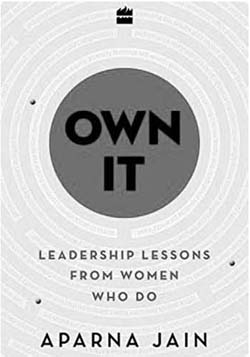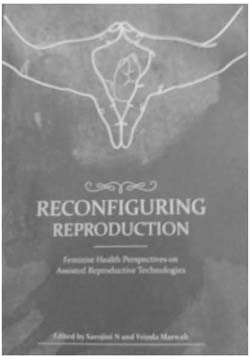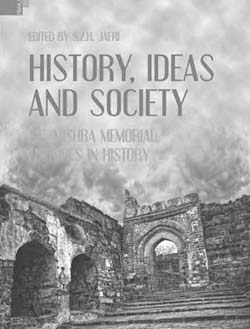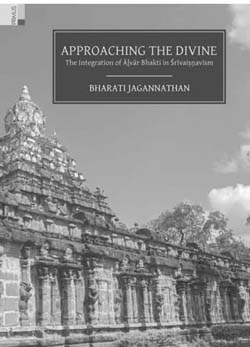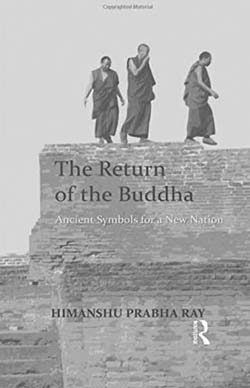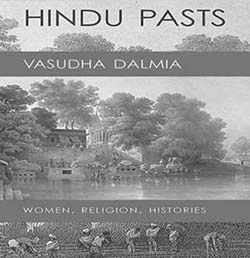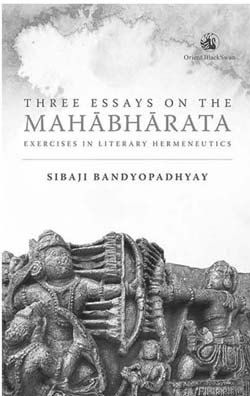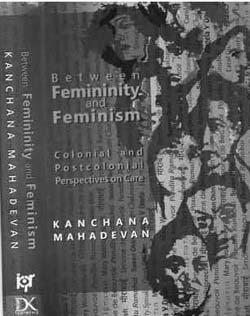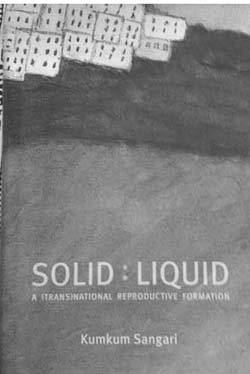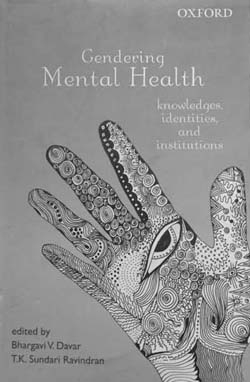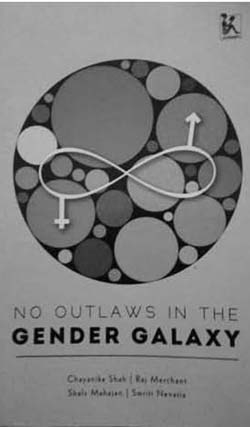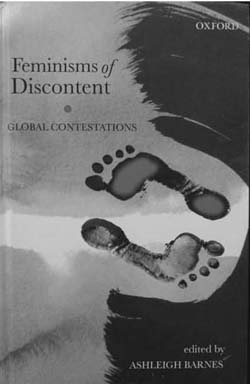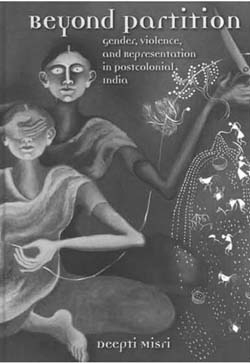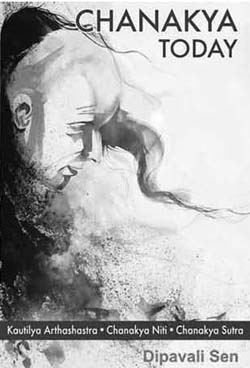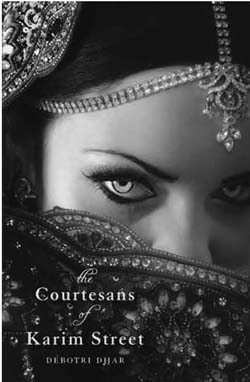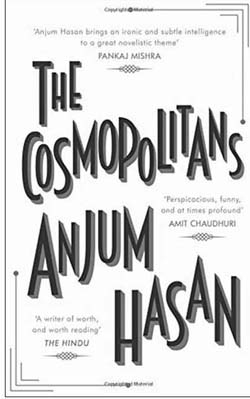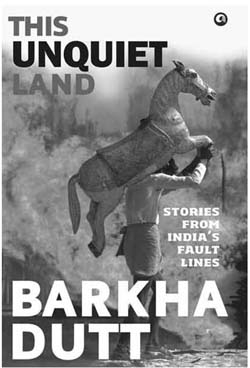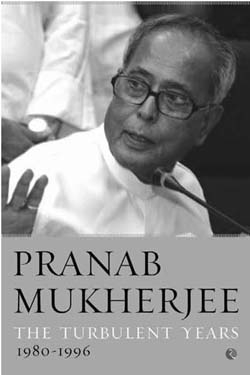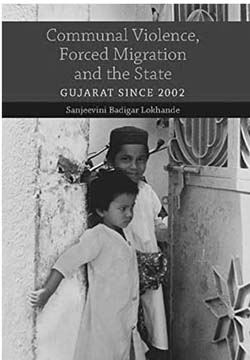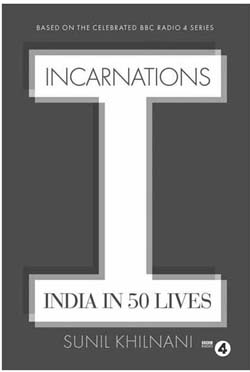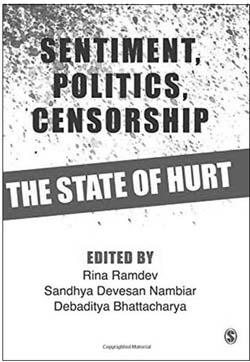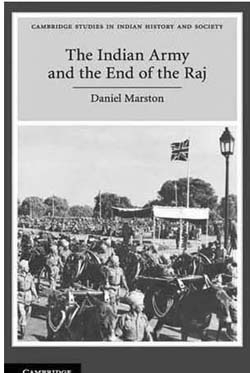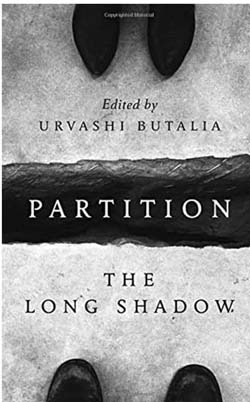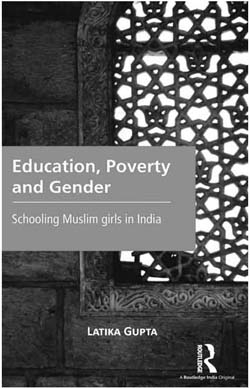Jayanti Naik says in the preface to the book: ‘This English translation will of- fer a glimpse into the true nature of Goansociety … different from the prevailing ste- reotyped and touristic images of Goa.’ The eleven stories in the collection are about ‘the salt of the earth’, that is, good and decent people who inhabit the villages in and around Quepem in South Goa. These people mainly belong to the ‘Bahujan Samaj’, as people of non-elite castes describe themselves. The 55- year old author and folklorist Jayanti Naik knows them well and her stories celebrate their myths, superstitions and folklore. Al- though the day-to-day lives of her charac- ters may be mundane what impressed me were the psychological insights extracted from them with her narrative skills.
Archives
January 2020 . VOLUME 1, NUMBERKiranmayi Indraganti’s book Her Majestic Voice gives us a broad socio-cultural study of the evolution of South Indian women playback singers of the mid-twentieth century. The book presents this vast but relatively unexplored field through the lives and careers of four important women playback singers, namely: P. Bhanumati, Ravu Balasaraswati Devi, Jikki Krishnaveni and K. Jamuna Rani, apart from a study of Lata Mangeshkar, whose career and choices are often set as a benchmark of comparison.
Books on performing arts in India have either been of the coffee table variety or dense and too theoretical. Books on classical dance in particular have often reiterated the existing primers and treatises like the Natya Shastra or the Abhinaya Darpana. Dance photography of course is a visual delight and some books on classical dance try to get by with a profusion of glamorous images. For too long, not much was written about the performing arts, for the tradition was sceptical of the written word and relied mostly on oral narrative accounts.
Chitra Banerjee Divakaruni is a prolific writer, social activist and a teacher of creative writing skills. In her latest work Before We Visit the Goddess she has deftly chronicled the diasporic enigmas spanning three generations and showcasing the agglutination of Indian and American cultural identities.
Here’s a real bonanza of stories! That’s what strikes one at first glance. Thirty-one short stories by well-known children’s authors … stories about school life-urban and rural, stories about dating and falling in love, futuristic stories that take one back to the crude past—that is, the present, strange stories about ghosts in boarding schools and school reunions, stories about stories that help make friends … it’s a lavish spread!
2016
What makes lovemaking and reading resemble each other most is that within both of them times and spaces open, different from measurable time and space.—Italo CalvinoThis is how Sudeep Sen introduces his book Ero Text to us. He brings together texts set in five sections—‘desire, disease, delusion, dream and downpour’. These pieces cross genres and boundaries of short prose, experimental fiction and poetry.
Compiled and edited by Khushwant Singh’s daughter, writer/publisher Mala Dayal, Me, The Jokerman, is a selection of his writings that appeared periodically over the years in the columns of nationally acclaimed newspapers and magazines such as The Hindustan Times, The Illustrated Weekly of India and The Tribune. These had made him a household name for his vigorous wit and sharp, analytical point of view. Singh never demurred from saying it as it was, or as he saw it was, and this assemblage of over fifty of his essays, most of them as yet unpublished in book form, are an example of his honesty, courage, humour and style.
You think of Arthur Conan Doyle, and the name that immediately comes to mind is that of the iconic Baker Street detective Sherlock Holmes. For lovers of crime fiction and Holmes, Baker Street is on the bucket list during any trip to London. Even today, Sherlock remains the most popular and iconic detective of all times, comparable perhaps only to Poirot, with a canon that has enthralled generation after generation of crime fiction lovers.
Reema Abbasi is truly a citizen of the world and one who is able to bridge many gaps in our world. Her first book, Historic Temples in Pakistan: A Call to Conscience, about the state of temples in her own country, was a trailblazer. This time she crossed over the border to write on Khwaja Garib Nawaz Moinuddin Chisti. This is a much-needed book in times of bigotry and growing misconceptions about people whom we think of as ‘the other’. Here I am in conversation with the wonderful author whose book is just steeped in spirituality, love and our shared heritage.
2017
Language is a plaything in poets’ hands, a raw material shaped into a sculpture. How far the poet engages with this challenge varies across the spectrum of this genre. Poets like Dastidar are not bothered about assuming the role of ‘legislators’ as Shelley would have it. Nor has he planned to be different, but he naturally achieves this as poet Mona Arshi observes in the blurb, ‘There really is no one else currently writing poetry quite like this.’ By implication it also means that this is not the collection one would decide to sit down with the cocoa, have feet up, and relax to enjoy it.
Dalit literary movement stormed the Telugu country in the 1990s after Women’s Writing shook the literary establishment in the 1980s. While Chikkanavutunna Pata (Thickening Song) edited by Tripuraneni Srinivas and G. Lakshminarasaiah in 1995 remains one of the most powerful anthologies to have brought out poetry from a large constituency of writers that included the SCs, BCs, and Muslim Minority writers, it fell short of its expectations with not a single woman writer being represented.
Years ago, I had seen Indira Parthasarathy when he joined our family in Srirangam on a day the Lord comes out of the temple in procession. He was looking intensely at the gorgeous presence of the Lord: was he wondering how Sri Ramanuja would have felt walking in the streets of this temple city and watching the Lord during the days of special procession? It was an unforgettable moment for me as I realized that Indira Parthasarathy has been more than a Professor of Tamil and an outstanding scholar.
Homi J. Bhabha, one of the stalwarts of Jawaharlal Nehru’s team who steered the growth of science in India, has always been a subject of great enthusiasm for historians of science. Often this interest in him has led to situating him within the frame of Nehruvian nationalism and the building of the nuclear technology establishment of the country, and of late, to addressing the relationship between science and the Indian state. The book under review veers away from these historiographical frames, and portrays Bhabha as an institution builder, and concentrates on the institutional history of Tata Institute of Fundamental Research (TIFR), Mumbai, one of the centres of scientific excellence in India.
The book under review examines the status of English Studies in India, as well as the aspirations pinned on it by students, teachers, policy makers and society. It is an invaluable resource book for academic readers who are interested in English Studies as a discipline at the higher education level. In this context, English Studies consists of the study of English literature, language, linguistics as well as cultural studies.
After the attack on an Army camp in Jammu and Kashmir’s Uri sector on 18 September 2016 by the militants in which twenty Indian soldiers lost their lives, the Government of India gave a call to scrap the Indus Water Treaty (IWT) of 1960 between India and Pakistan. This created ripples in both countries. For Pakistan the Indus River System (IRS) is a lifeline and without water from the rivers constituting the system, the country would lose its existence. In India many welcomed this decision while some questioned its rationality.
The editor of the volume under review, T.V. Paul, is James McGill Professor of International Relations in the Department of Political Science at McGill University. The book is rather dense and a difficult read, and consequently can only be recommended for the cognoscenti. Its 14 contributions are by well-chosen academics who attended a workshop with the theme ‘Globalisation and the Changing National Security State’ organized by the editor and his project team in late 2013.
At a time when doubling farmer’s income in the next five years has become the catch phrase, the policy emphasis is on the oft-beaten approach of boosting crop productivity, reducing the cost of cultivation, expanding the area under irrigation and providing a unified national agricultural market.
Years of feminist research have taught us that gender is a significant component of our identity. The script of gender may be provided by social norms but gender remains integral to how a self experiences his or her identity, as well as to how others identify one. Masculinity and femininity, as two dominant forms in which one’s gender identity is manifested, are the object of study in the articles being reviewed here. Manuella Ciotti’s edited Unsettling the Archetypes: Femininities and Masculinities in Indian Politics is a collection of articles which examines the effect on gender identities of political struggles of non-elite groups in Indian society and they negotiate their gender identity when they struggle against their non-elite status.
I begin my review of Amina Jamal’s Jamaat-e-Islami Women in Pakistan: Vanguard of a New Modernity with a couple of questions which I consider pertinent: Do women’s multiple narratives reveal a capacity for alternative ways of negotiating the construction of conflictual identities? Does the assumption of agential roles by traditional women in a patriarchal culture cause an identity conflict crisis which can be resolved through a firm commitment to specific values and goals? Women, as evidenced by the work of constructive and rehabilitative work undertaken by political and social women activists in South Asia during both turbulent and peaceful times, have more or less power depending on their specific situation, and they can be relatively submissive in one situation and relatively assertive in another.
Let me begin by confessing I am not the most appropriate reviewer for this book. When I volunteered to review the book, I was certain that the book would be about transnational commercial surrogacy or biocapital, as Kaushik Sunder Rajan’s work brilliantly shows us, where finance capital is intermeshed with trade in body parts: ova, fertilized embryos, embryonic stem cells and cord blood, a global business running into trillions.
Bhangya Bhukya’s The Roots of the Periphery: A History of the Gonds of Deccan India is a comprehensive history of the Gonds of Deccan India, an adivasi community. The research is based upon a wide range of sources ranging from the manuscripts, census, gazetteers, published government reports, journals and newspapers, unpublished documents, interviews and secondary sources.
Madhumita Sengupta’s Becoming Assamese: Colonialism and New Subjectivities in Northeast India is a welcome contribution to the study of colonialism and the making of 19th century Assam. The relations between the two processes have been the subject of research in the past, and continues to attract attention today. These researches have tried to look into aspects such as state making, political economy, production of culture, and the formation of identities. Sengupta’s book provides a background to these existing studies.
David Arnold begins his book with an impressive but brief survey of historic references to poison in India’s past. Poisons were widely known in ancient India. For example, in several ancient Indian texts appears the legend of vishkanya or poison-maiden, a woman whose body had been impregnated with poison as she took incremental doses of poison. Any physical intimacy with her could be fatal. As Sushruta Samhita mentions, ‘if she touches you, her sweat can kill, if you make love to her, your penis drops off like a ripe fruit from its stalk’ (p. 18).
Shashi Bhushan Upadhyay’s Historiography in the Modern World: Western and Indian Perspectives is a brilliantly compiled book, a re-view of the whole trajectory of historical thinking, sometimes based on primary sources and at times on secondary texts. Upadhyay’s book not only records history as an objective area of study, it also documents the history of historical methods. Unlike what the title suggests, the book is not only an exploration of the concept of historiography focusing on modern times, it also looks into the evolution of the concept from pre-modern to the modern times. However, as the author suggests, one has to make a distinction between the past, history and historiography.
What attitude does one assume towards empire? The book under review suggests in the very title that there is a proper way to hate it. This might also imply that the improper way of hating empire does not do the job well enough or does not go far enough. Among the multitude of arguments that this book deals with and in turn offers, the one that stands out with some degree of distinction is that the Enlightenment has ‘blackmailed’ individuals of especially the colonies by offering them the difficult alternative of either being on the side of progress and hence enlightenment; or contrary to this, putting them automatically on the side of all that is wrong with the colonized societies.
The last three years have seen an outpouring of works on ports, Rila Mukherjee ed. Vanguards of Globalization: Port-Cities from the Classical to the Modern, Sara Keller and Michael Pearson eds. Port Towns of Gujarat and Marie-Francoise Boussac, Jean-Francois Salles, Jean-Baptiste Yon eds. Ports of the Ancient Indian Ocean. Incidentally all three are Primus publications.
As is being discussed worldwide, the age of digital technology has given a new lease of life to analogue photography. The ability to scan and make digital files out of old fragile negatives and paper prints has given impetus and ease to the facility of making visual archives. Here are two presentations that are a valuable gift to the connoisseur of the not so recent cultural history of the Indian subcontinent that have been made possible by the effort of The Alkazi Collection of Photography.
Robert Elgood presents high-quality photographs of some two hundred items from the armoury of the Jaipur Court accompanied by technical descriptions and comments on the provenance of each. Sample, ‘hilt with the baluster grip with off-centre knop and projecting pommel’; or ‘nephrite “jade vert bronze” hilt … decorated with volutes, with two buds serving as vestigial quillons’. The author’s comments provide not only deeply-researched historical information but absorbing trivia for the curious browser.
This was a story that was waiting to be told, a personalized documentation of three decades of theatre in Bombay from the sixties to the nineties. This mapping is done through the three spaces which became a catalyst for a certain kind of theatre to bloom. Significant theatre actors and directors emerged from that period, learning as they experimented and engaged with text and space that did not fit the conventional template. This inadvertently created an alternative vision of how performance could be viewed
I happened to be reading A. Mangai’s book, Acting Up: Gender and Theatre in India, 1979 Onwards’ during the run-up to what promised to be high drama at the Shani Shingnapur temple in Sonai, Ahmednagar District, Maharashtra. Trupti Desai of Pune’s Bhumata Brigade had announced her plan to storm the sanctum sanctorum of the temple, forbidden to women, with an army of 1000 women. If the police debarred them from marching in, she planned to drop down on the open sanctum from a helicopter.
In 1983 the noted scholar of early Indian textiles and trade routes, Lotika Varadarajan wrote a seminal book on South Indian Traditions Of Kalamkari, published by the National Institute of Design & Perennial Press, It covered all three traditions of South Indian Kalamkari—Macchlipatnam, Srikalahasti and the lesser known Sikkinaikenpet.
To a Kolkata-Bengali to the core like me, who unfortunately has lived out of the city for almost a quarter of a century now and in this period has been to the city only once during the Pujas, that too more than a decade back, and yet who is aware of the fact that it is exactly during this period that Durga Puja in Kolkata has completely metamorphosed, and is vaguely aware of what he has missed out on, this beautifully produced book came quite literally as godsend. Beautiful the book certainly is—shaped, sized, priced, and in looks as it is like a coffee table book—with glossy pages, a wonderfully designed dust jacket, and almost five hundred full-colour photographs, and yet it is not your usual coffee table book.
Our experience, both at the personal and the public level, shows that Art lives and grows in a climate of freedom, peer rivalry, and infrastructural support. An element of spontaneity and a dropping of one’s defences are key for human expression to be creative, for your imagination to take flight. Art begins here, in that flight of fancy which all of us have experienced at one time or another. Fear, the fear of someone looking over your shoulder, is often the biggest enemy of such flights of fancy.
Religious nationalism remains an important phenomenon in the last three decades, which has manifested itself in an explicit manner after the fall of the Soviet Union. The books under review seek to study the phenomena of terror and violence unleashed across the globe, which the authors argue, have deep linkages with the advent of religious nationalism.
Drones, or remotely piloted aircrafts, or unmanned aerial vehicles (UAVs), so to speak, have added a new dimension to the way war is conducted in the 21st century. Drones, besides being used as lethal weapons of war, have added functions of being instruments used for collection of intelligence and surveillance. Proponents of the use of drones in warfare, counter-terrorism and counter-insurgency believe that drones have made it possible to target the enemy without much collateral damage (civilian casualties). The added advantage of a drone is that not only can it hover over an area of operation for a long time, but also it does not require manpower in the line of fire, thereby removing the greatest limitations states face in war: body bags.
Non-Traditional Security Challenges in Asia edited by Shebonti Ray Dadwal, Fellow and head of the Non-Traditional Security Centre at the Institute for Defence and Security Studies (IDSA) and Uttam Kumar Sinha, Fellow, IDSA is a compilation of papers presented by scholars in the field of Non-Traditional Security (NTS) threats at the 14th Asian Security Conference organized by the IDSA in February, 2012. It appears that while the International edition of this book was published in 2015, the South Asia edition has become available only in early 2016.
2016 got off to an inglorious start for India Pakistan relations with the attack on Pathankot’s Air Force base by terrorists allegedly affiliated to the Jaish-e-Mohammad militant group. The outfit, headquartered in Bahawalpur district, a cotton farming area in Pakistani Punjab, is one of a number of terrorist outfits operating in the region. In addition to Bahawalpur, areas like Rahim Yar Khan, Dera Gazi Khan, Chiniot and Jhang are considered fertile breeding ground for terrorist recruitment. Tashfeen Malik, one of the San Bernardino shooters, was apparently radicalized in Multan.
A complex, enigmatic web of contravening ideas and beliefs shaped Benazir Bhutto’s personality and also determined her political journey in one of the most challenging contexts in the region—Pakistan. As a newly created state with a religiously defined national identity, Pakistan’s social strata was yet to reconcile with the assertions and authority of women as politicians. Therefore, for reasons well understood, a wide range of scholarship has commented upon the life and political trajectory of the late Bhutto scion—a life so splendid, politically charged with its share of agony, yet cut short in a brutal assassination.
Don’t talk of hawks and doves. We are running a foreign policy, not a bird sanctuary.’ Former External Affairs Minister K. Natwar Singh’s riposte in 1988 when asked whether he was a hawk or a dove. Khurshid Kasuri served as Pakistan’s Foreign Minister (2002– 07) when General Parvez Musharraf was President. He succeeded Abdul Sattar, a former career diplomat, whom Musharraf had appointed immediately following the 1999 coup. (Sattar had briefly served in the same capacity in a caretaker government in 1993.
Burma’s strategic importance to India cannot be underestimated. A neighbour with 1600 kms border, a number of ports facing each other across the Bay of Bengal and four traditional roads connecting the two countries and administratively linked to India under British rule, India and Burma (Myanmar) share commonalities of history, culture, religion, ethnicity and spirituality. Myanmar is the perfect economic bridge between India and China and between South and Southeast Asia.
The plight of border communities, sundered by the Partition is now well recognized in all its dimensions—displacement, rehabilitation, economic and social disruption. While the brunt of the negative fallout was borne by the main inhabited areas along the Radcliffe Line (boundary between India and Pakistan and later Bangladesh), in more remote areas the impact was more economic. Yet over the years the communities living across each other along the border have found ways and means to continue their economic linkages through both formal and informal channels.
The book traces two centuries old history of plantations in Sri Lanka from its inception in the early 19th century to the present. In doing so the book highlights the complex interrelationship between power and class, gender and ethnic hierarchies. The authors are well known social scientists and have already made a mark as perceptive writers on Sri Lankan history and politics. Based on their rich experience, coupled with extensive use of archival and secondary sources and enriched by personal interviews with key players the book is an invaluable contribution to Sri Lankan history and politics.
2015
Tabish Khair’s The New Xenophobia is a bold effort to examine an increasingly pressing universal phenomenon, which the world has been ignoring as being part of the past. The importance of this work is that it seeks to place what it terms as ‘New’ in the perspective of what was the old xenophobia within the author’s broad concept that ‘Power refers to any imposition, the physical or not, of one consciousness upon another’ approvingly quoting Emmanuel Levinas, the French Lithuanian 20th century philosopher, on the nature of violence beyond the physical.
India’, according to Bharat Karnad, ‘is a latter day Hanuman, potentially powerful, but dwarfed by doubts, unsure of its strengths, [and] weighed down by a sense of its own weakness.’ The Monkey God in the Ramayana was able to at least shakeoff his misgivings and triumph when it mattered. For Karnad, there is little evidence that India can do the same. It is a nation, as his scathing critique suggests, which ‘has been down for so long in history’ that bursts of recognition from the outside are treated unevenly as a mark of achievement.
Billed as a ‘new history of the world’, this ambitious attempt at chronicling a version of world history from the perspective of the Eurasian Trade Routes is a great text. Peter Frankopan prefaces the book by condemning the excessively Eurocentric approach to traditional history writing as an explanation for this work. Outlining his dissatisfaction with the way history was taught, he talks about how as a child he had a world map in his bedroom.
Ronojoy Sen’s work suggests that the history of sports in India is much more than mere pastime and play. A study of the chequered history of sport would for Sen reveal much about the nature of Indian society, its values, ethics, aspirations, fissures, and very importantly the dynamics of power play. As Sen’s book succinctly portrays, the saga of sports in India has been inextricably bound with issues of class, identity mobility and patronage.
Bahram Modi, the Parsi merchant in Amitav Ghosh’s River of Smoke, turns to his associate in the last few pages of the novel and remarks poignantly, ‘When they make their future, do you think they will remember us… Do you think they will remember what we went through? Will they remember that it was the money we made here, the lessons we learnt and the things we saw that made it all possible?’ The urge to be remembered has been a recurring motive in history, though a privilege limited to very few.
Jihad is a much used and abused term in the contemporary twenty-first century. Today’s world has seen the proliferation of self-proclaimed jihadi groups claiming responsibility for terror strikes like the 9/11 attacks in the USA and the recent Paris strikes. The backdrop of these terrorist activities is the geopolitics of wars and oil refineries and the quest by western powers to spread democracy to the so called non-democratic Islamic world.
From the thirteenth century onward, cities played a central role in the emergence, consolidation and subsequent expansion of Muslim power across large sways of the Indian subcontinent. The Delhi Sultanate (1206–1526), the Mughal Empire (1526– 1857), as well as smaller medieval Muslim principalities such as the sultanates of the Deccan, revolved around urban agglomerations that were simultaneously seats of power, centers of learning and economic hubs. The intimate relations of Indian Muslims with the urban environment remains epitomized, to this day, by the takhallus (nom de plume) of many Urdu poets, which showcases their belonging to a particular city.
Debjani Das’s book attempts a close look at the history of the establishment of asylums in various parts of Bengal throughout the nineteenth century. The book is rich in archival detail with the different chapters complementing the themes considered for discussion.The first theme is the exploration of the linkages of the politics of inner space and geographical location of the asylums with that of the emergence of the various definitions of insanity intervened by notions about race.
The historiography of colonial rule in India has for long been focused on the polarities of coercion and consent. Over the past two decades or so, historians have done much to further our understanding of the admixture of force and collaboration in sustaining colonial domination. More recent works inspired by Foucauldian notions of governmentality have drawn our attention to the workings of colonial power at its point of application. These have underscored the extent to which imperial governance was, in practice, far from being ideologically stable and self-confident, and was actually shot through with uncertainty and panic, hesitancy and contradiction
Almost all studies of the colonial Indian military establishment which impinge on the relationship between the British and Indian personnel of the colonial Indian armed forces focus attention on the existential crisis of the colonial subjects in military uniform. This existential crisis arose from the peculiar colonial circumstances which governed the lives and societies of these, to use a cliched term, peasants in uniform. There is no dearth of books and articles written on the subject of obedience and disobedience among the Indians who served as soldiers and junior officers first in the three Presidency Armies and later in the Indian Army. Many of these narratives are mentioned and discussed in the Introduction by Dasgupta.
Zia ud Din Barani, in his Tarikh-i Firuz Shahi begins his account of the history of the Delhi Sultanate where Qazi Minhaj ud Din Juzjani had left it in his Tabaqat-i Nasiri. Minhaj had covered the history of mankind from Adam till the end of Sultan Nasir ud Din’s reign. Thus, Tarikh-i Firuz Shahi begins from the accession of Balban in AH 662/1266 CE and it is brought to the sixth year of Firuz Shah Tughlaq’s reign in AH 758/1357.
This book is the author’s attempt to make her reader experi-ence diverse aspects of the lives of the ‘poor’ in this country. Without going into the complexity of defining a phenomenon as massive as poverty, the author has simply taken the reader through journeys of people from various parts of India in their quest of the basics.
The Turn of the Tortoise (TOT) is an exhaustive and superbly written book that enagages the gamut of governance issues concerning growth, welfare and foreign policy with significant and unusual insights that derive from the author’s engagement with the real world. The book speaks to a wide range of issues ranging from entrepreneurship, corruption, governance, environment, poverty alleviation, foreign relations, and even compares the governance of growth in India and China and the implications of the rise of China for India.
India has recently been introduced to the idea of the Smart City. Exactly what shape any ‘smart city’ will take is a matter of debate. The reality of Indian cities is that they are messy, with multiple processes and phenomenon going on at the same time, several of which appear to be the exact opposite of one another. Sanjay Srivastava’s book Entangled Urbanisms: Slum, Gated Community and Shopping Mall in Delhi and Gurgaon, contends with some of these processes that are making the city what it is
As a sociologist of education, I have dwelt on the inequalities present in not only our education system but also in the many processes, activities and inter-subjective interactions that characterize life in educational institutions. These have brought home to me the heightened significance of certain categories in understanding inequity in education, including caste, gender, religion, linguistic abilities, and disabilities of different kinds.
The ‘Insider’ versus the ‘Outsider’ debate is not new in social science research. Indian sociology, in fact, has largely privileged the Outsider. Part of the reason for this phenomenon is that the late 18th and mid 19th century Orientalists were convinced that Outsiders like themselves were more capable than Natives of obtaining authentic knowledge, because of their guiding principles of ‘objectivity’ and ‘scientific rigour’. Even after Indian Independence, many sociologists believed that emotional and intellectual detachment was possible by studying a social group very different from one’s own.
Editorial
Destination India: From London Overland to India is the last co-authored book of Susanne and Lloyd Rudolph—the intellectual stalwarts and eminent scholars of modern India. The book under review is an intellectual biographical account of their joint academic journey of six and half decades revealing the historical trajectory of their writings. The book is neatly divided into three essays in a compact and small size with an attractive lay out.
The US Presidential elections are upon us and what better time to read political memoirs of the leading Presidential candidates than this? Bernie Sanders is junior Senator from Vermont and was the first Independent elected to the US House of Representatives in forty years. He is the longest serving Independent in the history of the US Congress and is the co-founder of the Congressional Progressive Caucus, the largest caucus in Congress. He joined the Democratic Party in 2015 and is currently fighting for the nomination of the party.
Those with some knowledge of the rise and expansion of social welfare states in the West post-Second World War know that social welfare for the socially and economically underprivileged and needy was necessitated for the sake of capitalism in order to mitigate many social and economic tensions. It proved functional for a considerable length of time until about the 1980s when the new Right political philosophy and political economy came out with a virulent assault on social welfare and the public institutional structures built around it.
2015
India Since 2002 is a collection of critical reflections by Mukul Dube on the socio-political happenings in India in the aftermath of the Gujarat genocide of 2002, previously published in the weekly Mainstream between 2002 and 2015. Dube’s principal focus in this anthology is the depredations of the Sangh Parivar, the torch bearer of the ‘Vedic Taliban’ and Hindu fundamentalism.
In 1987, Doordarshan, the state-controlled television network, began to air Ramanand Sagar’s popular show based on the epic Ramayana. Its broadcast was a remarkable departure for a government institution like Doordarshan from the Nehruvian mandate to uphold a secular and modern character and eschew tradition, especially when invoked in the context of religion. The televisual retelling of the epic achieved unprecedented popularity.
This volume offers a comparative perspective of media in two very different countries, and the ways in which they are changing. Eighteen writers—mostly scholars and journalists—bring their experience and differing perspectives to it, and pick a range of subjects to look at, through twin perspectives. The editors devise a structure in which chapters on China and India alternate through four sections which explore structure, reporters, practices and comparative case studies in two areas—social media, and disaster reporting.
Along with Mohan Rakesh, Vijay Tendulkar and Girish Karnad, Badal Sircar was a preeminent playwright who shaped our modern theatre. Ebong Indrajeet (Evam Indrajeet, ‘And Indrajeet’, 1963) and Pagla Ghoda (‘Mad Horse’, 1967) are undisputed classics of the modern Indian stage, translated into several languages and performed across the country. They blazed a trail, and opened new vistas. Badal Sircar was a playwright of great power and technical sophistication.
The nature and purport of this book is clearly explained by its title. It is a dictionary in English of technical terms, legal, political and administrative, used in the Sanskrit language.Such works on Sanskrit already exist for grammar and priestly rituals. The most recent are Abhyankar and Shukla’s A Dictionary of Grammar, 1986, and Sen’s A Dictionary of Vedic Rituals, 1978. The need for one on law, statecraft and political science prompted the present compilation, it being felt that technical terms on these subjects were not available sufficiently in standard Sanskrit-English dictionaries.
2015
Suleiman Charitra is a truly amazing little book. A short work in Sanskrit from the 16th century, it’s title should be enough of a clue to even the casual reader about its hybrid nature. It is a perfectly synthetic work that, on the surface, tells a story from the Semitic tradition in the form of a classical Sanskrit narrative—the Charitra, i.e., the acts of a great man who might be a king, a hero, or even a god. But below the surface, there are currents and eddies, perhaps even whirlpools, that sweep us off our feet and away into an unexpected story land
In Chinglam, most of what I plan comes true and that has seldom happened to me in any other place. The days were stolen before they had begun; I think I never saw a day. When I was a child I remember days that stretched into infinity with the certainty of other infinite days; certain, unhurried and brimmingly full.For the reader, the beauty of life in a solitary mountainous retreat in the North East is evoked in this very image of time hanging so heavy; the author’s day-to-day journal describes small and unrelated acts of quotidian life, human exchanges, and communion with nature, children and animals minutely one after the other as she reminisces about her life as a recluse for a year.
This study is a broad history of Muslims and Jews in France from World War I to the present times. With half a million Jews and 4 to 6 million Muslims, France is home to the largest Jewish and Muslim populations in Western Europe. It tries to look at how the lives of Jews and Muslims had been entwined on both sides of the French Mediterranean. Historically what we call Jewish-Muslim relations in France were neither inescapably ethno-religious nor necessarily oppositional, rather they interacted on a wide range of terms.
The long eighteenth century was a period of major transformation of the relations between India and Europe, with the advent of imperialism. The English justified colonialism by claiming that oriental despotism was replaced by moral and enlightened government. This claim has long been countered by critiques of imperialism. Some of the earliest of these criticisms emerged as early as the eighteenth century, from what may be termed the peripheries of empire, from Irish statesmen and journalists such as Edmund Burke and William Duane, or from the mythologizing of French imperial figures like Dupleix as purveyors of a superior French system of colonialism.
Reading Unequal Worlds by Vidhu Verma is like reading an epistemological ‘post-mortem’ of the societal context which prompted Rohith Vemula to commit suicide. The book unfolds a number of factors which put Dalits and minorities (read Muslims) to ‘social death’ in their everyday life. Discrimination has been direct, indirect, institutional or structural. It can be seen in institutional biases, social closure to maximize rewards by restricting access to resources and opportunities to a limited circle of the eligible (p. 26); through ‘unruly practices’ (gaps between rules and their implementation).
The history of technology in India, and more specifically that of technological transfer from the metropole to colony, has been narrated from a number of perspectives, ranging from critical (technology as disruption) to laudatory (technology as redemption). In the context of the history of the railways in India, Ian Kerr with his Building the Railways of the Raj (1995) and Engines of Change (2007) has extensively mapped the processes by which the railways were planted, and thrived, in colonial India.
Development and nationalism were two themes highlighted in March 2016 with two major stories in the national media: the Union Budget Announcements 2016-17 and the uproar over sedition (anti-nationalist) charges on a few students of Jawaharlal Nehru University. Hannah Werner’s book The Politics of Dams also deliberates over the same themes. The author keeps the big dams at the centre of the stage and attempts to analyse developmental aims and objectives of the Indian state post Independence, comparing them with the development aims of the colonial state.
Eighteen: The End of Innocence is a book dedicated to coming of age. Those sensitive teenage years which oscillate between childhood and adulthood are often beset with physical, mental and social worries. Books dealing with this time of life could be both a guide and friend. Yet there has been a regrettable gap in our literature for the young adult. This vacuum is recently being filled with novels on adolescent years and college life by a host of upcoming young authors.
The three books under review here, all belonging to the Environment and Nature category, cover India’s many protected areas. India has designated its protected wildlife areas as National Parks, Wildlife Sanctuaries, Bird Sanctuaries and Tiger Reserves. Besides this, there are areas that are designated as Important Bird Areas. Similarly, the country’s Western Ghats and the North East are declared global biodiversity hotspots.
Book reviews often depend on the affinity of the reviewer. The complex text of Indian femininity and feminism is not an easy phenomenon to be codified by any language of art and the art of the written word is no exception. R.K. Biswas’s Breasts and Other Afflictions of Women is a sensational draw for sure. Will it be Indian English’s answer to Eva Ensler’s Vagina Monologues? was the first question to come to my mind.
The eponymous story in this collection—a minor galaxy, to further the metaphor the title introduces—traces an encounter with the last speaker of a language, an elderly ailing woman in an unnamed location. All we can glean is that she is remote—geographically, culturally, and, of course, linguistically—from the team of young researchers who appear with their machines to record that which is inherently impossible—‘speech’ in a language of which she is the last remaining speaker.
2016
Paul Cooper is audacious in not only situating his debut novel in as unlikely a setting as medieval Sri Lanka but in constructing it around an ancient Sanskrit poem. His daring choice of context, however, adds to the lustre of the book. River of Ink is a work of abundant creative ability: an adroitly-crafted love story, a morality tale about poetry’s triumph over oppression.
If I recall right, Keki Daruwalla, a noted poet and writer of short stories, first ventured into the jungle of novels relatively late in life, in 2009, with an intriguing book titled For Pepper and Christ. I am not sure if the book did well in sales. I rather think it did not, although it had much to commend it. The problem was with the way it had been structured. His second novel, Ancestral Affairs, should do better.
This monograph is the product of two decades of research by an amateur ethnographer who, based in the Nilgiri Hills, has devoted time both to the study and support of the Toda community. Chhabra’s work with the Todas crosses the spheres of research, advocacy and friendship. In 1992, he established the Toda Nalvazhvu Sangam (the Toda Welfare Society) to mediate between the local government and the community. Much of the monograph has been published elsewhere and the chapters remain relatively discrete but exceptionally rich explorations of particular facets of the Toda community’s cultural and religious life set carefully within the landscape, flora and fauna of the Nilgiri hills.
Lengthening Shadows, an anthology of short stories in the Portuguese-language from Goa, a former Portuguese colony, which covers a period of more than a century, from 1860 to 1980, was edited and translated into the English language by Paul Melo e Castro, an English scholar on Goan literature based at Leeds University. With the exception of ‘The Africa Boat’ by Laxmanrao Sardessai, the stories in this collection were painstakingly compiled by Melo e Castro from Goan newspapers, the Bulletin from the Institute Menezes Bragança (IMB), and private libraries. Therefore, while they are a novelty for the lay reader, they are a real treasure for literary scholars.
Evangelising the Nation by John Thomas is an important study on the making of the Naga nation, and especially its relation with the (Baptist) Church. There are few works which have critically engaged with this relationship. The book covers the period from the late nineteenth century to the last decades of the twentieth century in five chapters. Broadly, there are two inter-related processes which the book deals with. What is equally notable, as the book shows, is that the two processes emerged almost around the same time.
2015
Hailed as a landmark literary work, a milestone in the literary history of Gujarat, Sarasvatichandra, Govardhanram Tripathi’s magnum opus is now available in English translation (coincidentally, all the four parts of the novel have been translated into Hindi at this juncture), after 128 years of its publication in Gujarati. It is but natural for the discerning reader to wonder why it was not translated for these many years.
Reading Island of Lost Shadows takes one compulsively back to Joseph Conrad’s Heart of Darkness. A century and a half after the publication of Conrad’s masterpiece, here is another novel, set in Kerala, a continent away from Conrad’s Africa, that probes the ability of power to corrode the human soul. A boat journey across a river, a headless trunk of a pig washed down the stream, the mysterious figure of Karadi Papa (more a myth than a man), the impaled head on the gates of the Meledathu tharavadu, the tribal Paniyas with their chants, songs, and rituals—all bring to mind a Conradian world of darkness, mystery and, more than anything else, horror.
The wounds may have healed to an extent but the suffering is relived and borne again and again by the affected families and through them, by their younger generations. The Sikhs who faced the terror and shame of the 1984 riots have found a voice in this book which Nilanjan Mukhopadhyay, a well-known journalist and political commentator, has written almost three decades after the horrifying event. This is no fiction! Even the people whose stories he narrates have not been given any fictional names.
In the year 1996 during an election rally in Lucknow when Atal Bihari Vajpayee stepped on the stage the excited crowd chanted, ‘Hamara PM kaisa ho, Atal Bihari Jaisa ho’. Vajpayee retorted in his characteristic style, ‘Arre PM chodo, pahle MP to banao’. What followed was another round of applause and cheers. Such rallies became Vajpayee’s trademark where he used wit and humour to strike a chord with his listeners instead of empty promises.In his sixties, Vajpayee had a huge following of youngsters who had been brought up in Uttar Pradesh and other States of the Hindi heartland of 1990s and had grown up listening to his poems and anecdotes.
Since the days of her research under the late Professor Bipan Chandra in the 1980s to the publication of Patel, Prasad and Rajaji: Myth of the Indian Right, Delhi University historian Neerja Singh has been engaging with the ‘right-wing politics in the Congress’. Critiquing the ‘Left’ historiography for clubbing Sardar Patel, Rajendra Prasad and Rajagopalachari under the Right Wing fold of the Congress, she offers the argument that these three key leaders of the Congress.
The Raj at War: People’s History of India’s Second World War by Yasmin Khan, an Associate Professor of history at the University of Oxford and a winner of the Royal Historical Society’s Gladstone Prize, 2007, indeed justifies the prestigious award by being another magnum opus after The Great Partition. History from below was the project of subaltern historians during the 1980s, which was a paradigm shift in the study of history itself, by giving due attention to the excluded and marginalized voices and recognizing their important contribution in our society. The Raj at War does not claim to be one such text but it is written on similar lines.
Odisha and Odiya language faced a crisis in the second half of the nineteenth century. Institutions and dispositions introduced by colonial modernity had produced a crisis of survival and autonomy before the Odiya speaking gentry. The new system of education, style of governance, use of technology, maritime trade, new revenue regulations, modern science and healthcare practices, and even food and other articles of consumption and new forms of entertainment, had unsettled a traditional social order. The Odiya literati responded to this crisis in several ways.
There are certain books that never lose their charm and value despite the passage of time. It is mainly because of the intellectual stimulation their contents give us and the variety of academic debates they initiate. One of such works is Essays in Medieval Indian Economic History edited by Satish Chandra. This volume being a collection of representative articles taken out of the Proceedings of the Indian History Congress (1935–1986) and originally published in 1987 as a part of the Golden Jubilee Celebrations of the Indian History Congress,
The volume under review is a compilation of much that has been published as research papers on Indian education since 2000. They have a very contemporary location in terms of the importance of ideas being discussed, and also the academic relevance of what has been included. Although put together as a reading in the disciplines of Sociology and Social Anthropology, much of the discussion in the introduction as well as in a variety of papers transcends disciplinary boundaries, and poses therefore the challenge of what the integrating framework should be like.
Khwaja Ahmed Abbas donned many hats in his lifetime which includes writing poetry, short stories, novels and making films. For the uninitiated, K.A. Abbas was an active member of PWA and one of the founding members of IPTA. With the corpus of 74 books, 40 films, 89 short stories and 3,000 or so from his column writings, Abbas Sahab’s writings constitute a treasure-trove of information on the evolution of the idea of India. At the time of writing one of his last columns for the Blitz, Abbas Sahab makes an important observation about the then budding journalist P. Sainath—the proof of his astute reading of the media in general and politics in particular.
Shafey Kidwai’s book is true to its title and it delivers what it promises. The chapters in this book may have been written over a long period of time but probably the book was waiting for a time when the distinction between literature and nonliterature (read journalism) is not so sharp. A different context would make earlier journalistic writings appear as literature. How do we read the essays of Addison, Matthew Arnold or Sir Syed Ahmad Khan today if not as literature? The two components of the book, literature and journalism, are defined by their textuality, a major point of debate in critical theory today.
The Gypsy in the World of Ideas by Rajen Harshe is a successful attempt at addressing the issues of Indian society, politics, intellectual history and institutions through the perspective that developed consequent upon Harshe’s longstanding experiences as an academician and institution builder. We can find here idea and praxis mixed together creating thoughtful reading for the readers. Breaking the conventional formats it ardently depends on the use of metaphors and poetic symbols.
Let me introduce the book to the readers with an anecdote concerning the subject matter of the book. I joined as a medical undergraduate student at the Delhi’s University College of Medical Sciences (UCMS) in 1986, which by that time had shifted just adjacent to Shahdara in eastern Delhi, within the newly constructed campus of Guru Teg Bahadur Hospital (GTB). Having passed through the humdrum of Shahdara or other crowded and maddeningly chaotic localities of East Delhi to reach the GTB campus, its spacious locale and high rise buildings of the campus were bound to make an impression on any visitor.
This is a recent offering by Amartya Sen, who currently teaches economics and philosophy at Harvard University. He was earlier Master of Trinity College, Cambridge and is a Nobel prize winner.The book contains 13 essays, selected and organized by the editors of The Little Magazine, (TLM) who have resisted the urge to make them ‘contemporary’. They are presented in a chronological manner, covering the broad fields of culture, society and policy. An intimately warm, yet gently provocative, foreword by Gopalkrishna
Unforgotten is the product of Bianca Brijnath’s doctoral research at Monash University. It can be considered as a significant contribution to anthropological literature on ageing, dementia and its care in India. Though her research is limited to urban middle class (which she acknowledges as a limitation), it is truly revealing in terms of the confined participants and their lived experience with dementia and sevâ. Sevâ a concept which Brijnath explores in all its forms and layers as care work is shaped in everyday family life centred on cooking, feeding and eating; in doctor shopping and looking for an ilâj or cure; and bearing the attended expenses.
The picture on the cover of Sudhir Mahadevan’s book is a Bioscope; a techno-material ‘assemblage’ that he will argue is emblematic of film cultures in India. Writes Mahedevan: The Bioscope is the combination of the past and the present. It represents the key symbol of early cinema brushing against new and not so new media. It is the refashioning of an ‘optical device’ of still pictures predating the cinema in the 19th Century, into a source of moving images with the help of home viewing technology and digital formats.
As stated by Kapila Vatsyayan, Chairperson, IIC Asia Project in her Foreword, the book is the author’s ‘personal voyage or certainly a journey of exploring and identifying the many levels of communications between India and countries of South East Asia over a long period of history.’ The journey has been lucidly captured in the text that illustrates the large number of colour visuals in the book. Many of these have been sourced from museums in countries of South East Asia during the author’s long sojourns in the region.
This is a book by arguably one of the best historians of migration of today. It definitely lives up to the fact that it won the American Historical Association’s John F. Richards Prize in South Asian History. The work is of a high scholarly nature, yet it makes you want to read it like a novel reminding one of the narrative genius of the likes of Amitav Ghosh. It is a solid history of migrations around the Bay of Bengal but can be of interest to scholars of environment, geographers and cartographers, not to say to those who are interested in the region itself.
Meera Nanda’s new book continues with her mission to critically examine the interface of science, religion and Right Wing politics in India, which is a highly significant theme today with the growing trend of saffronization of knowledge production. While in her previous works such as Breaking the Spell of Dharma and Other Essays (2002), and Prophets Facing Backward: Postmodern Critiques of Science and Hindu Nationalism (2004), she explored the theme for largely an academic readership, the book addresses the general reader.
The work under review is a collection of essays written by one of the well known historians of the Delhi Sultanate, Mohammad Habib. There are eight essays in this collection that deal with the social and cultural transformations in the Sultanate period. Some of these essays have turned out to be quite controversial, and have generated exciting controversies among historians. The essays ‘Sultan Mahmud of Ghaznin’ and ‘Chishti Mystic Records of the Sultanate Period’ have, for instance, been endlessly debated among historians, and we have still not heard the last word on the controversies that surround them.
Connectivity between India and China has always been a difficult issue. Historically, though there was flow of ideas and goods between the two sides, these connections were lost over time. With the economic rise of both India and China the debate over the benefits which border trade and connectivity can provide for further development of the region has gained momentum. To encash this India and China started border trade at Nathu La in July 2006.
It is often a matter of surprise and disappointment that two countries, namely India and Japan, well-established and vibrant democracies which have no historical baggage of any dispute, and which on the other hand are bound by Asian cultural traditions and values, and the teachings of Buddhism, still do not find themselves having a substantive relationship. Actually there are considerable complementarities in the economic field; moreover, the two share a common security concern of the rising power of the neighbour.
Boundary lines between constituencies not only determine who controls parliament or a legislative assembly but their functioning as well. Fixing Electoral Boundaries in India is based on the central idea that drawing constituency boundaries has serious implications for both the practice of politics and the working of democracy. This book underscores the point that demarcating constituencies is not a routine ‘techno-bureaucratic’ exercise but involves ‘philosophical, legal, political, technical and practical’ considerations
This is a volume where the editors lend it gravitas because of their redoubtable scholarship. They are further assisted by twenty essays written mostly by scholars who would invariably be part of a volume like this either because of their previous works and association and thereby justify inclusion in a compendium like this. As the title goes, it provides a wide canvas for the essays to explore wide issues ranging from importance that should be given to history, to importance of poetry in today’s increasingly monosyllabic and geometric world.
Given the legacy of colonialism and the lack of transition that the South Asian states have made to frameworks for understanding alternative cartographic imaginations, nation-states, modernity, development and security issues both at the national and regional level, Niel De Votta’s edited work, An Introduction to South Asian Politics, is an important contribution towards laying out the broad contours and contemporary canvas of South Asian politics. It has been argued that fragile domestic structures in South Asia have largely been responsible for determining the national, regional and international politics of South Asia, and the idea of South Asia in the 21st century and beyond will continue to be governed by this important variable.
Critique is essential to the healthy existence of a society. From its inception as an independent nation to its functioning for more than seven decades there have been many critiques of the dominant ideas that shape Indian society and its daily life. One of the most pervasive ideologies that Indian society is inflicted with is the ‘mahatma-ness’ of Gandhi and the dazzling statesmanship of Nehru. It is normally perpetrated through the medium of text-books and other state apparatuses upon the people’s life. It is not the purpose of this review to argue that Gandhi and Nehru were not great men but to show and acknowledge the existence of an ideological apparatus that profits from maintaining the projection of the extraordinary greatness of these personalities.
The book under review, an edited volume by Saitya Brata Das and Soumyabrata Choudhury, comprising fifteen articles divided into two sections, is one of the important epistemic interventions concerning violence and its metaphysics. Besides addressing aforesaid questions in different ways, the book surprisingly and illuminatingly underlines the question of violence or violence theory in those thinkers/philosophers (Rene Girard, Sigmund Freud, Emmanuel Levinas, Jacques Derrida, Schelling, Deleuze, Nietzsche, Whitehead, Musil, Karl Marx and Walter Benjamin) who are otherwise known for their different impactful and consequential works. Identified realms of weight of violence are religion, language and politics.
In his obituary to Benedict Anderson, historian Ramchandra Guha recollects a letter from him in which he asked, ‘How many public intellectuals are there in India? In Southeast Asia they are dying, replaced by professors and bureaucrats to whom not many ordinary people pay any attention… I guess your Gandhi was a public intellectual, but probably Nehru not???????’The worry about the disappearance of the institution of public intellectual is widespread. Romila Thapar expressed her own anxiety about the decreasing tribe of public intellectuals in the annual Nikhil Chakravartty Memorial Lecture in 2014 titled To Question or Not to Question
To those who describe Bhikhu Parekh as the leading political theorist of Indian origin, essays in this volume will show that such parochial frames of representation do not do justice to his ideas. He is, and must be viewed as an eminent political theorist of our time, whose work has contributed enormously to our thinking about political concepts that we use to analyse the modern world and confront the challenges of our time.
It is perhaps a cliché to argue that South Asia is a potpourri of different influencing societies, nationalities, ethnic traditions and cultural heritages. South Asian culture is rich and varied underlining the complex relationship between its myriad common traditional cultures. The nations share an ethnic background and most of the territorial divisions have come up only in the recent past.
I have just read the 40 years of the Book Review. Wonderful, if you have not read it, well need I say you should! One of the editors is close to me, in many ways. I think she wanted to render homage to the words and books which, nurtured us, accompanied us. We grew up in a home, I say home not house for therein lies the difference, for words meant a lot to us, in a home I was saying, where the walls were lined with books which murmured wherever we moved, whatever we did. This constant presence never did quieten, throughout our lives the ‘emanating words, words from the walls words from the air’
Editorial
To review a classic is always difficult. How much could one praise and fawn over a book which reads so delightfully that you tend to forget that it is a nonfiction piece of work? Malcom Mcdonald was the UK High Commissioner to India in the 1950s and lived in the heart of Delhi, the Lutyen’s zone. Being a bird watching enthusiast he spent a lot of time observing the feathered ones in his garden.
For many people living in rural and suburban areas, coming across wild animals is a part of life. Be it that friendly squirrel or the (ever-dwindling) flock of sparrows, or the sinister snake that lives at the end of the garden. However, as urban sprawls expand to swallow up green spaces, these relationships are becoming ever scarcer.
In her first book of poetry Indu Mallah has chosen as her epigraph an exquisite poem by Ralph Nazareth. The glassblower’s art becomes a metaphor for the art of writing: ‘I’ve seen / Glassblowers/ stretch little / Into much. / Such is my hope / For words—/ Blowing syllables up / To hold a world / Close to breaking.The first part of the poems in this collection deals with her family, husband, sons, daughter. The feelings of intense love, pain and loss pervade this section. In the first poem, ‘Meeting Points’, is to her husband, whom death snatched away.
As a curious reader scans the titles of the poems listed on the contents page of the poetry collection of Jayant Parmar’s Pencil aur Doosri Nazmein translated by Nishat Zaidi as Pencil and Other Poems, an unsurprising summation ensues: poems related to nature with images from the flora and fauna; ghazals and nazms, predictably expected from an Urdu poet; then poems that are dedications to persons; poems about persons and poems related to places and travel. The reader is reassured of the obvious terrain to traverse. Comforted, the process of reading the poems begins.
Sahil Loomba’s debut novel The Faceless Saldirgan is the perfect screen play for a masala potboiler. A thriller with the right blend of intrigue and suspense, it keeps the reader on edge as suspicion darts from one suspect to the other. For a seasoned discerning reader of crime fiction, none are above suspicion but Loomba factors in the right elements, ‘a multi-billionaire victim, gruesome body art, tantalizing allegations, media frenzy, destroyed reputations and what not!’ along with a gripping pace and provocative clues
2015
Amitava Kumar’s Lunch with a Bigot is divided into four main sections— Reading, Writing, Places and People. They offer a road map to navigate through the different articles that were written and published in diverse places.In the first section, there is a journey through his childhood experience and him emerging as a person who was grasping varied experiences and incorporating them as his ‘resource bank’. I have recently read Sudhir Kakkar’s memoirs and the narration of his own childhood. In my mind, there is an intermingling of his narration with that of Amitava’s in terms of the evocative details offered of the experience.
2014
The book is set against the backdrop of the rise of insurgency in Kashmir, when what began as a conflict between rival political groups escalated into youth crossing the border into Pakistan to return with kalashnikovs. The brutality with which the army responds turns the valley into a war zone. Kashmir is virtually under siege. The novel provides an insider’s view of how political apathy coalesces with mindless military brutality to wreak havoc on the lives of ordinary people by focusing on one woman’s desperate and futile search for her missing son.
2015
Crimson City, the fourth Muzaffar Jang mystery by Madhulika Liddle, is a whodunit set in mid-seventeenth century Dilli with the Mughal court as its backdrop. Emperor Shah Jahan’s grandiose plans have begun to deplete the exchequer dangerously. A Mughal army is besieging the fort of Bidar, as a first step towards conquering the Bijapur kingdom with its enormous wealth.
Writings by Adivasis (ecriture) which have emerged in India during the last three decades mark an important milestone in the context of the cultural expression of Adivasis hitherto found only in the oral-performative tradition (orature). These writings are markers of identity assertion and cultural activism by educated Adivasis who want to write about themselves in their own words to combat their degraded or exoticized depiction by non-Adivasi writers. One needs to read Narayan’s interview (Kocharethi, OUP, 2011, 208–16) to realize why educated Adivasis are prompted to pick up their pen.
2015
Rohith Vemula’s hanging body; Soni Sori’s swollen face; Kawasi Hidme’s ejecting uterus; Monisha, Priyanka and Suranya’s floating bodies—all have one thing in common—these are Dalit bodies. Living or dead, their faces, uterus, eyes, hands and feet are first Dalit, then parts of a human body. This raises a crucial question: how can a human body, an anatomical subject formed of cells that are always dissolving, regenerating and growing, embody something as non-biodegradable as caste?
There is hardly any doubt that Kannada has one of the richest traditions of literary writings and debates, reflecting a largely uninterrupted continuity from pre-colonial to modern times. For whatever awards are worth, it is perhaps not accidental that its writers have received the highest number of Jnanapith awards in post-Independence India. Assured of their bedrock of literary output and open always to literatures across the world, Kannada writers have written their own works and translated from the best writing available, always evolving as the social context changed, in terms of literary form and content.
2015
Ashapurna Debi is one of the first Bengali women writers to bring to the fore the condition of Bengali women in the larger part of the 20th century. She was known as one of the first Bengali writers to write realistically about the life these women faced within the four walls of the house, in the midst of complex family relationships, petty jealousies and other experiences. The stories in this collection The Matchbox, translated from the Bengali by Prasenjit Gupta are part of this same mosaic, delineating the emotions of the ordinary middle class Bengali, whose outward lives seem devoid of sensationalism, to the extent that everyday is like the previous one, or even the next one, yet these same lives contain within them a psychological and emotional terrain that is far more complex than the external image.
The Last Candles of the Night is the fourth and last novel by Ian Bedford, who passed away, at the age of 76, shortly after the novel was published. He must have been a remarkable man. He did his Master’s in Lahore, studied Islam in Pakistan and India, did much field research work in India, Pakistan and elsewhere in Central Asia, translated Urdu poetry, explored Sufism and Indian classical music, and married an Indian woman. And yes, he worked in the Department of Anthropology at Macquarie University for decades before taking to writing fiction.
In 1931 sculptor Carl Milles cast Poseidon in 23 feet of imposing metal and the Southern Port City of Gothenburg, Sweden installed him atop a fountain as homage to the seas and their Viking past.About 60 years later a Swede left Gotaplatsen and the shadow of Poseidon behind him and travelled East until destiny brought him in front of another idol.30 odd feet of garishly painted metal sheeting tacked to a bamboo scaffolding!
In a recent interview, US President Barack Obama said, ‘when I think about how I understand my role as citizen, setting aside being president, and the most important set of understandings that I bring to that position of citizen, the most important stuff I’ve learned I think I’ve learned from novels.’ Shane Joseph’s latest book, In The Shadow of the Conquistador, is indeed one such novel from which we can learn much. While on its surface it might appear to be a lovetriangle romantic story, it has a lot to offer in our understanding of the human spirit that at times lusts for conquest and colonization, but can develop bonds of friendship which sometimes lead to betrayal, and yet through the power to love it can overcome evil.
2015
Set against the backdrop of the Partition, this novel narrates the story of Jamshed Alam, a Bihari Muslim boy born in the infamous Camp Geneva in Dhaka and raised in Kolkata, a city his poor refugee parents migrate to hoping for a legally secure, economically rewarding and socially dignified life. But does the city deliver what the Alam family seeks? The unfolding lives of Jamshed, his polio-stricken elder sister Miriam (Miri), tailor-father Abu, and seamstress-mother Ruksana in 14, Zakaria Street in northern-central Kolkata and beyond show how the city,
A World Elsewhere, a self-published novel by Shanta Acharya, is about a new world, a search for a state of being, a quest for meaning and for home—wherever that may be. Set in Orissa, India in the turmoil of the post-Independence years, in the clash of old and new world views, Anglophilia and Anglophobia, we are introduced to a hardworking, academic Hindu family who believes in the power of education, who struggles to maintain stability both within the family as well as in society, who understands that progress is needed for growth yet is bound by the demands of a closed society, especially when it comes to women.
It is good to have an end to journey toward; but it is the journey that matters, in the end. (Ernest Hemingway)The opening sentence of Prabhu Ghate’s By Thumb, Hoof and Wheel: Travels in the Global South sets the tone for what the traveller-reader should expect from the book: ‘Apart from trying to communicate the sheer joy of travel, and its huge educational possibilities, and weaving a bit of contemporary history into the story, I hope to persuade readers in this book that one does not have to be particularly rich to travel, or young for that matter (just young at heart, reasonably fit, empathetic, and curious.)’ The book catches the fervour of our times, when interest in travel and travel writings is growing among people, especially catching on with Indians.
This nosegay of memories, personal and collective, has many a bright offering which takes the reader by the hand through the lesser-known and familiar byways of the Doon valley. Every generation treasures memories of days gone by: a slower paced world, a world warmed by the sandpapering of time. Nothing can ever remain the same again. Memories of Another Day brings to life the old and the familiar to those of us who lived in this once green valley. Vanished landmarks like Kwality restaurant, Landour Clock Tower and others are symbols of the loss.
The painting of tall, grim-looking Afghans on the cover of In A Land Far From Home makes for possibly one of the most deceptive book covers. You’d believe that here is a heavy, boring, fact-addled tome on Afghan history. Nothing could be further from the truth. Syed Mujtaba Ali’s book, a travelogue that should be treated as a slice of history, is possibly one of the most delightful books ever written, and equally delightfully translated by Nazes Afroz from the Bengali original, Deshe Bideshe.
Travelogues from the past are more than mere journeys over a land mass or stretch of sea. They speak to us of life-styles, of economic strengths and weaknesses, of politics and race and of nationhood and family relations—all interlinked and woven together in the writer’s imagination. The translator and editor of both the volumes which have appeared in quick succession, Somdatta Mandal, herself a tireless traveller and an equally indefatigable translator, is determined to bring the invisible past before us. A few years ago she had brought to the public another Bengali woman’s travelogue Attiya’s Journey and in the years in between she has edited two volumes of critical essays on travelogues from Indian languages.
Gora in Bengali is considered to be the best novel by Rabindranath Tagore for its epic range. Though written between 1907 and 1909 (when the author was in his forties), the action of the text is clearly set at least thirty years earlier, in the early 1880s and takes into account events that happened even earlier. If one takes into consideration the moment of Gora’s birth, then the action of the narrative should be said to begin from the year 1857. The novel is considered central to the nation question because it captures the Indian nationalist upsurge of the late nineteenth-early twentieth century in all its tragic complexity. Gora is produced in an awareness of Lord Curzon’s proposed partition of Bengal and the consequent crystallization of the Bengal-Indian identity.
As our journey into the future continues—the present moment drifting away, our own biographies lengthening, our pasts receding inexorably, quietly becoming “history” in the distance— so certain aspects of those retreating eras seem to come more sharply into focus and claim our attention. The longer view allows us to see these features of the recent past as truly defining characteristics of those decades that we lived through.’—William Boyd.
2014
Astory about the secret life of a novelist and short-story writer, and a famous one at that, never fails to interest, and this novel does not disappoint. Mainly covering the twelve-year period between 1912 and 1924 when the conception and writing of the classic novel, A Passage to India, took place, Damon Galgut takes us through the repressed life of E.M. Forster, a creature of Empire who was also the victim of its restrictive class, racial and morality norms. Forster’s homosexuality was known among his inner circle but never to his wider audience of readers until his posthumous novel Maurice was released.
Nancy M. Tischler’s first definitive biography of Tennessee Williams appeared in 1960 when the dramatist had all but exhausted his trajectory of great writing. Tischler’s book entitled Tennessee Williams: The Rebellious Puritan was, in many ways, the first critical appreciation of the great American dramatist’s work. It wove his life—family and background—into his work and tried to offer a psycho-biographical interpretation. Another significant biography appeared in 1985—two years after the dramatist’s death.
One’s first encounter with fiction has been generally through the reading of or listening to fairy tales, mystery tales, superhero stories, popular stories, classic love stories and fantasy novels. And while reading and enjoying them we hardly give a thought to how this enchanting form, both long and short fiction came into existence. Defining the novel is a tricky task since it mediates through various forms of art and adapts itself to the demands of the changing cultural milieus
The process of institutionalizing radical protest politics and their demands include a swathe of dilemmas and complexities that include the possibility of de-radicalizing and blocking the political and collective sense that such politics grounds them on. Thus, radical politics on the one hand wishes to witness institutionalization and mainstreaming of their politics to redefine political landscapes, while on the other, they wish to continue as radical protest politics maintaining the fervour and the process of wedging open social narratives that had little space hitherto. It has often been witnessed that political movements that institutionalize themselves in law, policy, and formal institutions carry the anxiety of deradicalizing themselves. The protests get entangled in legal dilemmas as has happened with the sub-caste politics, where mass mobilization was replaced by technical detailing of who is or is not eligible for reservations, or as has been the case with domestic violence where with 468(a) the issue was individualized, and became a matter of accessing the judiciary,
India is endowed with a rich philosophical tradition, which dates back to ancient times, a tradition which is also varied along various axes. One of the main concerns of Bhikhu Parekh is to show the richness of this tradition from the perspective of the norms and standards of argumentation within the political and philosophical discourses. His main concern is how standards were maintained when discussion and debate went antagonistic—publicly. Parekh thinks it is worthwhile to investigate this aspect because he is of the opinion that earlier studies, particularly the work of Amartya Sen is not satisfactory enough. Although he agrees with much of Sen’s work in The Argumentative Indian, he ‘departs from him in several respects’. The word ‘argumentative’ in the book is used sometimes ‘in the sense of being methodical in one’s reasoning and weighing up arguments before reaching a conclusion’ and sometimes it seems that it is being used in the negative pejorative sense and in a ‘more common and conventional sense, it refers to someone who argues for the sake of arguing.’ Moreover, Sen does not emphasize the importance of having a tradition of ‘public debate’. Sen only focuses on ‘disagreements between two individual or schools and overlooks the equally and, in some contexts, far more important public debates conducted before large audiences, having formal structure and involving a binging verdict.’ The aim of the book partly is to introduce to the reader the methods in which this public debate took in the ‘Indian tradition’.
Pavan Kumar Malreddy’s slim volume discusses and synthesizes three concepts with concrete examples: orientalism, terrorism and indigenism (Dalit Bahujan movements), with an involved reading of academic literature as well as the popular media. He draws from the contemporary literary studies in South Asia to discourse on orientalism and contemporary manifestations of terrorism (9/11 for example). What gets highlighted in the process are contradictions inherent in the way South Asia has viewed and comprehended postcolonialism, as analysed in the Subaltern Studies and the way the West has viewed it. The book makes an attempt to position Orientalism in a postcolonial world in transition with terrorism and identity-based cleavages occupying axis-space for discussions. The use of the work of prominent literary figures from South Asia to analyse the three concepts is an innovative analytical tool in the study.
In the times we live in—where, often acknowledging, tolerating and celebrating differences is seen as a sign of weakness nothing opens better the debate on gender, as this quote from Marguerite Yourcenar’s ‘With Open Eyes’ written and published in 1980: ‘… Anyway, women who say “men” and men who say “women”, usually to complain within one group as within the other, instill in me a great sense of ennui, like do those who stumble through all that is formulaic.There are virtues that are specifically ‘feminine’ which feminists seem to scorn, this does not by the way mean that these were ever the prerogative of all women : gentleness, goodness, finesse, delicacy, virtues so important that if a man did not possess them at least in small proportions, he would be considered a brute, not a man.
Editorial
A report on a book discussion held at the India International Centre on May 24, 2016, with Indu Agnihotri, CWDS, in the chair and Vidhu Varma (JNU), Kusha Tiwari (Shyam Lal College) and Baran Faoorqi (JMI) in the panel.Prostitution is about the only job in the world in which you earn the most on your first day. As the days pass, your income declines before you finally burn out within 10–15, or if you are lucky, twenty years. Prostitution consumes your body, destroying it with the abuse, insecurity and poverty that often comes with it. The bouquet of three books under discussion approaches the subject of prostitution from multiple angles. A statement that emerges with tremendous force from these three books could be, ‘Prostitution is a choice where there is no choice.’
Rekha’s book attempts to chart the complex terrain of women’s writing in post-Independence India, while declaredly wishing to avoid the pitfalls of the ‘generalizations’ that are attendant on both mainstream Women’s Studies methodologies and what she calls ‘Indo-centric’ approaches to the subject. Rekha also wishes to address what she considers a significant gap in the existing oeuvre of critical work on women’s writing in India: the privileging of the ‘temporal axis’ and the insufficient attention paid to the politics of space in the shaping of women’s experience, especially as reflected in the literature produced by them. In view of this, she makes what she calls a ‘representative sampling’ of women’s prose fiction from the country, choosing the work of five major writers: Krishna Sobti (Hindi, b. 1925), Mahasweta Devi (Bengali, b. 1926), Kamal Desai (Marathi, 1928–2011), Ambai (her pseudonym, she writes as C.S. Lakshmi when she writes as a critic in Tamil and English, b. 1944) and Githa Hariharan (English, b. 1954).
Tehrik-e-Niswan, a pioneering performance group, working on gender and politics turns thirty in 2009. The group organized its first theatre festival in Karachi in 2009, followed by a Conference in 2010. The book at hand is an outcome of that conference. The volume has been originally published as Gender, Politics and Performance in South Asia by Oxford University Press, Pakistan and Women Unlimited has brought out the Indian version by arrangement with OUP. The volume has 14 papers divided into four sections, with an introduction on (Re)-presenting the Nation by Syed Jamil Ahmed. Gender is a predominant category of analysis in most papers, even though the definition of the same varies from writer to writer. Most of the articles are based on Tehrik-e-Niswan’s history, productions and reception. As such it is an amazing document of the group. The others deal with women who have paved the way for newer perspectives by their lives and works right from the late 19th century to the present. Syed Jamil Ahmed has documented the history of the play Kabar, an iconic play on Bengali Renaissance in Bangladesh in 1953. There is one article on archaeological findings of dancing and singing figures in Sindh region of Pakistan. India is represented by the introductory article and Madhu Kishwar’s article on Bollywood films.
Dalit Women Speak Out: Caste and Gender Violence in India is a sobering book. The study, encompassing four states in India (Bihar, Uttar Pradesh, Andhra Pradesh and Tamil Nadu—Pondicherry) and based on interviews with 500 Dalit women, sets out to explore ‘the phenomenon of violence against Dalit women, a subject hitherto little addressed by academics, human rights activists and the Indian state’ (p. 31).The study forces our attention on a grim truth that is widely known yet ignored precisely because of its everydayness—when viewed from the constitutional and human rights perspective (human rights, the authors remind us, are ‘the foundation of human needs’ (p. 5)), the right to equality remains unrealized and inaccessible for Dalit women. Extreme forms of sexual violence and economic exploitation shape the lives of these women. Staking claim to a piece of land or one’s rightful wages or to the common resources of the village are treated as major acts of transgression.
Gender and Caste Hierarchy in Colonial Bengal by Deboshruti Roychowdhury explores how different ranks of caste groups in colonial Bengal contemplated the ‘ideal woman’. The subtitle suggests that the book might talk about significant ‘interventions’ by subordinate castes on the ‘women’s question’ in colonial Bengal, interventions that could possibly bring out the contested and variegated nature of the ideal(s). Reading the book, however, makes it clear that the author’s point is about ‘Brahmanical hegemony’ being ‘something truly total in nature’ (p. 217). Thus the author argues that claims of superior status in terms of caste were organically linked to claims of ‘purity’ which, in turn, placed oppressive burdens of chastity, fidelity, subservience and self-sacrifice invariably on women. Amid unprecedented opportunities offered by the colonial regime, low caste groups saw their improvement of social status in the imposition of oppressive patriarchal norms, ‘Brahmanical in nature’ (p. 216), on their women. Roychowdhury assumes that this meant a loss to lower caste women’s erstwhile relative freedom ‘whose way of life was subjected to fiercer scrutiny than ever before’ (p. 204). To quote her: ‘The absence of free choices for women thus became a ubiquitous phenomenon prevalent across almost all the social strata of colonial Bengal’ (p. 9).
What makes this book a unique read is that it focuses not on any stepwells in Gujarat but on stepwells that were commissioned by women between the 7th and the 19th centuries— we are talking about the connect that stepwells and women had which was not restricted only to women drawing water from them but also of women creating a space for themselves at the stepwells. The book opens with two pictures facing each other—one is a map of the important stepwells commissioned by women or built to honour them while the other picture is that of a group of women on their way to the wells with their water pots. The book begins by tracing the importance of water for rituals and traditions across India. Bhatt traces the history behind the construction of wells and stepwells which were regarded as ‘acts of charity’.
One of the first thoughts after going through the book under review is the sense of deep dissatisfaction and unease with the dominant model of development as induced by World Bank and International Monetary Fund manifested in Structural Adjustment Programmes being practised in the name of development in India in general and Punjab in particular. From the feminist lens the resultant situation is more alarming as it is the women who have and are still bearing the aftershocks of such lopsided understanding and practice of development as ‘… development policy in general, and structural adjustment in particular, is not gender-neutral’ (DeshmukhRanadive, 2003: viii). Padhi’s book is an account through the voices of women survivors i.e., Jat-Sikh wives and widows and mothers how their lives are fraught with economic and familial insecurities, helplessness, humiliation in the wake of suicide committed by the male members of the family due to inability to repay back the loan to the local money lender, the arhtiya. Through the extensive fieldwork conducted intermittently during 2006–2010 of the selected villages, the author judiciously uses both questionnaire and interview tools to elicit data in narrative form which later on has been qualitatively and quantitatively analysed to arrive at ‘patterns’ of ‘structured layers of class, caste and patriarchy’ (pp. 168) affecting women. The agrarian milieu of districts of the Malwa region, Punjab provides the setting of the study. The choice of the region is much guided by the fact that it has been the seedbed of green revolution.
Because the darkness is never so distant,’ ————-W. H. AudenBrian D. Freese writes in the preface that ‘all literary depictions of the Holocaust end as failures’. ‘Holocaust is but an approximation of what happened. The species cannot grasp its nature for the word is not the thing itself’. The species, he asserts elsewhere, is ‘damaged, for only a damaged species could have committed the Holocaust.’ The author starts with a pessimism born of long years devoted to understanding the phenomenon.
Since the emergence to power of the Sangh Parivar and the dominance in Indian politics of a narrow-minded majoritarianism, there has been an understandable tendency towards nostalgia for the so-called ‘Nehruvian’ period. This is a tendency in which this reviewer has also participated: in publication projects that have more or less been based on backward glances to what seems in retrospect a ‘golden age’ of the Indian state. But the nostalgia for a more tolerant and less exclusionary (in terms of income, class, caste, gender) India can go too far in invoking the ‘Nehruvian’ as such a golden age
In the Club is a welcome addition to the study of colonialism and colonial bourgeois sociality in South Asia. The book is not so much a history of clubs as it is a study of the formation and articulation of social relations in clubs. Though the network of clubs played a significant role in the unfolding of colonialism in South Asia, it is still a relatively ignored area in the historiography of colonial encounters. In fact, this is the first book-length survey of clubs in this part of the world. It is not dedicated to a particular city.
Rabindranath Tagore’s visit to Italy in 1925, and especially the controversial tour of Italy in 1926 at the invitation of Benito Mussolini, has been a matter of interest to Tagore scholars for a long time. The acceptance of an invitation from a Fascist dictator by a great humanist baffled the international community of that time. The encounter also aroused a good deal of media interest both within and outside Italy.
As the title suggests, P. Sanal Mohan’s Modernity of Slavery, employs a multidisciplinary approach and marks a significant contribution towards understanding the history of oppression within the story of modernity. By exploring the hitherto neglected histories of slave caste populations in colonial Kerala, he makes a passionate attempt to recover lost voices.
A representative from Monsanto, the world’s largest seed company that today controls 65% of the global seed market for maize and more than a quarter of the world’s commercial seed market, is on record to have defined the problem to securing a Global Intellectual Property Rights Agreement as: ‘Farmers save seeds’—and thus they offered a solution: ‘Seed saving should be made illegal’.
The edited volume under review by anthropologist Subhadra Mitra Channa and sociologist Marilyn Porter focuses on a wide range of case studies from across the world related to ways in which women manage environmental resources. The book is a product of the International Union of Anthropological and Ethnological Sciences (IUAES) meeting held in China in 2009. The contributors to the volume show the connections between increasing poverty and global capitalist exploitation that negatively affects women’s access to resources. As recognized by the UN Security Council, since the 1990s, most conflicts around the world are related to disputes over natural resources, whether they are over oil, water, mining or access to land to grow crops. Women have played an important role in the peace processes.
This book as the author claims ‘draws upon her PhD dissertation written more than a quarter of a century ago’. She fears that the definition of ‘cultural history at that time was rather narrow and the broad spectrum that is attached today to this branch of historical study was unknown those days’. She apologizes for the narrative style of her compendium which she admits is ‘overburdened with data’ and is apprehensive about the ‘readability of the book’ because she admits that her ‘youthful enthusiasm as a researcher’ led to a kind of ‘data fetishism’.
What has sex work got to do with private water tanks or making of hair pins or average rainfall in Marathwada? In Street Corner Secrets, Svati P. Shah critically engage with the academic knowledge production which ignores such connections. She debunks the figure of the lonely sex worker lurking timidly among the shadows by the street or who remains confined within brothels. Instead she situates women engaged in sexual commerce firmly amidst thick descriptions of migration, informal labour economy, land speculation, urban housing projects, infrastructure underdevelopment of rural areas, ecological degradation, water scarcity, displacement, caste politics and gendered inequalities in the wage labour market. These also mark the compulsions or constraints surrounding the livelihood choices of women including sex work.
In 1981, the Kolhan Raksha Sangh, an adivasi political organization formed in Singhbhum in 1977, declared that Kolhan1 was a sovereign state, independent from India. A delegation of the representatives of this ‘Kolhan republic’ went to Delhi, and thereafter to England. The delegates claimed that Kolhan was legally outside India’s territory and was entitled to self-government under Wilkinson’s Rules since there was no official document of merger between Kolhan and the State of India.
While providing new opportunities to women workers, global capitalism, tends to both not only use prevailing gender stereotypes but rearticulates them. This is the core message of the book. Surveying women’s location in varied professions from high tech occupations, to traditionally male dominated professions, while there is exploitation, there is also a degree of agency exercised by women. Metro cities belying the assumption of a liberal, more accommodating spaces to women nonetheless re-entrench culturally engraved sociocultural norms about where women can work and what kind of work is permissible. Looking at different locations where they work like petty production work, home based work, modern professions that require education and special skills and training, what emerges is this: gender norms pose limits to what they can gain through equal wages and equal access to positions of power and leadership. Equal wages is sidelined by segmentation of work into gender segregated work.
Piketty’s book Capital in the 21st Century has burst upon the sky of economics, like a huge round of fire crackers. It has sold 2 million copies and has been translated into several languages. The book has focused on economic inequality—its source and its impact. Piketty’s main thrust is to reveal that the wealthy, he calls it the one percent, will continue to accumulate wealth. He reveals the dynamics of such a process, and then concentrates on the tax system as a possible source to reduce this phenomenon. It is of course a startling revelation, especially the argument on the process.
Saumya Dey’s Becoming Hindus and Muslims tries to provide an alternative understanding of the growth of HinduMuslim identities in the region of Bengal. He challenges the understanding of historians that attributed primacy to the coming of colonialism in forming Indian identities like the ever so contested Hindu-Muslim identity. The book then wants to shatter the myth that prior to the arrival of colonialism Indians were not conscious of group labels like ‘Hindus’ and ‘Muslims’.
‘The Special Cells are located in the police system to draw on the power of the law and the Constitution to aid abused women to rebuild their lives, but this power is neither benign nor apolitical’ writes Anjali Dave in Women Survivors of Violence; Genesis and Growth of a State Support System. There is no one better qualified than Anjali Dave—a feminist activist, social worker and teacher—to critically look at the course and consequence of engaging with the state to address the issue of violence against women.
2016
Anxiety about the safety of women in India has always been a topic of discussion in social and academic meetings. While articulate non-academics bemoan the continuing relevance of the topic in a developing and seemingly modern society, academics attempt to understand the underlying reasons for the persistent perception of women as vulnerable beings. The debate took a more urgent turn when world media reported the gang rape of a young physiotherapy intern in a moving bus on one of the arterial roads of Dehi during the night of December 16, 2012. The media’s coverage of the incident and civil society’s mobilization to demand an amendment in the law led to the passing of The Criminal Law (Amendement) Act of 2013.
Looking at the proceedings of the Constituent Assembly of India, between November 1948 and January 1949, one is compelled to note the immense amount of criticism that the draft constitution evoked. One of the draft articles that came up for discussion was the then Article 35 which stated that the state should endeavour to establish a Uniform Civil Code in India. In response, one member complained that the draft constitution lacked any ‘provisions which safeguard the personal law of the people’ (Nov. 8, 1948). Another member insisted that ‘The right of a group or a community of people to follow and adhere to its own personal law is among the fundamental rights and this provision should really be amongst the statutory justiciable fundamental rights’ (November 23, 1948).
There is growing concern among a section of scholars that the ebbing away of the spirit of Punjabiyat results in erosion of interest in Punjab Studies. They strive to identify some of those over-arching Punjabi ties that communicate the message of Punjabiyat stretched across the five doabs and facilitate forging ties across the religious boundaries. These scholarly initiatives struggle to outline Punjab’s cultural diversity and portray experiences of plurality that flow along the Radcliffe boundary of the Indo-Pakistan subcontinent and keep its residents aware of how Punjabiyat is still breathing in the lives of millions of Punjabis.
The book begins with an evocative gaze that lingers over the writing on the walls of family courts in Kolkata. The writing on the walls of the courts invites attention to what Srimati Basu characterizes as the disciplinary governmentality of courts; seductive calls for alternative dispute resolution; normative pictures of family and marriage and finally, a ‘noble’ feminism according women honour and protection within matrimony. The pedagogical function of the walls frames the discourses that a litigant engages with in the court or in a counsellor’s office. This ethnographic account leads us to the multiple places where law sits and rises to adjudicate, mediate and constitute everyday troubles of matrimonial life.
Deba Prosad Chowdhury’s The Idea of History in a Changing World disaggregates the different historical moments that produced the conceptual frame of modern scientific history. Tracing its philosophical foundations in Herodotus and Thucydides, Chowdhury locates its founding concepts in post-enlightenment philosophical discourses of humanism, rationalism, progress, objectivity and scientific thought.
I f you look at the number of books that are publishing the narratives of women, that’s a story in itself. Suddenly, the voiceless gender is speaking out—boldly, aggressively, honestly. What’s more, the second sex is getting heard—if the plethora of women centric books hitting the stores is any yardstick.Aparna Jain’s Own It tells the stories of women at the workplace and the persisting glass ceiling, while Walking Towards Ourselves is a collection of intensely personal accounts of women who have constantly faced challenges on account of their gender, colour or community. One is a business book, focusing on the issues confronting career women in organizations, while the other has a more sweeping canvas capturing a rich tapestry of real life experiences of women living in India.
This edited volume by N. Sarojini and Vrinda Marwah brings out a comprehensive understanding of the political economy of Assisted Reproductive Technology (ART). The debate on ART shows a very complex picture; on the one side, marketed as pro-women technology— often projecting it as helping women to fulfill their desire to be mothers—it also invokes questions of violence and control on women’s bodies, on the other. Any discussions on ART would navigate through this complex and paradoxical set of realities where women’s bodies are the sites for various negotiations with market, medical technologies, and ideologies.
Acompilation of ten essays originally presented on the occasion of the S.C. Mishra memorial at the Indian History Congress, History, Ideas and Society covers a wide variety of themes, ranging from historical ideas and ideologies to colonialism, communalism, sex-education, science and coins, the book portrays the dynamics of Indian history at its best. By bringing together writings on various periods of time and place, it not only adds to the richness but also contributes to unravelling the pathbreaking moments of Indian historical research.
In the ‘Introduction’ to The Invention of Tradition [1983], co-edited by Eric Hobsbwam and Terence Ranger. Hobsbawm remarked, ‘“Traditions” which appear or claim to be old are often recent in origin and sometimes invented…. “Invented tradition” is taken to mean a set of practices….which seek to inculcate certain values and norms of behaviour by repetition, which automatically implies continuity with the past.’ Approaching the Divine by Bharati Jagannathan illustrates the case of such an invented tradition of the Srivaisnava community of South India (located in modern Tamil Nadu, southern Andhra Pradesh and Karnataka).
It is well known that the first Indian initiative at writing a history of Indian Archaeology was taken by Sourindranath Roy when he wrote ‘Indian Archaeology from Jones to Marshall (1784–1947)’ way back in 1953 which was largely a narrative of events relating to official archaeologists. On its publication and thereafter Roy’s narrative acquired a seminal status. However, beyond the official scheme of things there were initiatives of many individuals and institutions that played a significant role in understanding the past.
Amaravati began to be developed as the capital of Andhra Pradesh last year, and the State’s creation of its new identity has involved an emphasis on its Buddhist past, at least partly to attract foreign investment. The Government of Andhra Pradesh also plans to set up a museum in Amaravati in memory of B.R. Ambedkar, who converted to Buddhism, but also interpreted its Pali canon afresh.
Editorial
In ‘Where these essays are coming from’, the introduction to this volume, Vasudha Dalmia retraces her intellectual formation and weaves the trajectory of her personal research interests with the political and cultural history of the last three decades. Intellectual autobiographies are all too rare, yet always riveting to read.Chance encounters that lead to unforeseen life paths (for her, landing in Germany as a 22-year-old), mixed family histories that surface later in life as questions demanding to be answered and reconciled
The Mahåbhårata is a unique text which not only claims for itself an encyclopaedic status declaring itself to be a compendium of everything that is there on social morality (dharma), political economy (artha), pleasure (kåma) and spiritual liberation (moksa) (Mbh I.56.33)—but also points out its rightful position as an itihåsa placed at a conversational crossroads among the authors located in its past, present and future (Mbh I.1.24; I.56.22). Therefore, there is no wonder that it captured the imagination of scholars, interpreters, translators and creative writers across time and space, leading to the production of a mammoth bibliography around itself.
Guest editing a special history issue for The Book Review was a good opportunity to reflect on what history means and what it represents, standing in the second decade of the twenty-first century. The discipline has moved beyond the Positivist idea of ‘scientific history’; yet, in popular perception (substantiated by the recent comments of a well-read novelist), History remains primarily a chronology of events. The academia—particularly in humanities—has become largely interdisciplinary, and that definitely reshaped our way of reconstructing the past.
Like other existential crises or questions, feminist dilemmas too are fraught with the need to forge an adequate praxis for the individual feminist and for the collective consciousness that we have learnt to describe as feminist. These dilemmas encompass a wide canvas of issues ranging from epistemology and morality to the concerns of change and transformation. An important axis on which one of these dilemmas is played out—across cultures—is women’s traditional roles as care givers in the private domain and their quest to free themselves of the burden of the same.
Solid: Liquid offers significant new insights about the emerging configurations of family and gender relations in Indian society which are increasingly being shaped by a neoliberal state and market. Focused on the practices of sex selection and commercial surrogacy, Sangari makes a strong case for the relevance, if not indispensability, of a triadic framework made up of family, state and market to analyse the emerging and persisting patriarchal configurations in contemporary India. As revealed through an incisive analysis of the uses to which assisted reproductive technologies have been put in India, this work shows that patriarchal practices exist both within and outside a transnational capitalist regime and must not be mistaken as ‘women’s issues’ (p. 156).
As is reflected in the title, this is a fascinating anthology that looks critically at knowledges, identities and institutions related to women’s mental health. Each of these are very lofty concepts and constructions in themselves that find elaborate deconstruction and articulation in the nine essays that comprise this book. The field of Mental Health in contemporary times has become truly multidisciplinary in nature and draws extensively from the frameworks of Philosophy, Sociology, Psychology, Psychiatry, Literature, Law, Human Rights and Gender Studies. This enables new conceptualizations and perspectives to emerge. Likewise, recognizing the importance of pluralism, multiplicity and diverse realities flowing from varied cultures and contexts, in understanding the subjective worlds and experiences of individuals, who are emotionally disturbed, victims of trauma, suffering or afflicted with disease, often labelled as being of ‘unsound mind’, is also essential. All the nine essayists recognize these dimensions and raise questions about the existing systems, beliefs and practices which perpetuate the use of labels, stigma and mechanical rendering of therapeutic services and justice to women.
What this book does from the start is interpellate the reader, literally asking them the question—where are you from? Are[n’t] you an outlaw too? Is there any way to speak of these things other than from the position of the implicated, interested outlaw? And as it takes the reader on the methodologically risky and provisional journey of finding and giving voice for outlaws, and in the process revisiting models of speech, it offers innumerable possibilities— of language, milestones, and networks.
The title of this book suggests two very significant things. The first is that a unified field of feminism is a misnomer and the second that there is a considerable amount of restlessness with feminist theory and politics. Both these elements actually make the domain of feminist scholarship and practice very charged and challenging, and open and dynamic.The most exciting aspect of trying to map the terrain of feminist scholarship is twofold. First, that it is intrinsically linked with the lived experiences of men and women, second, that it draws its energies by critiquing and engaging in a dialogue with its own understanding. Feminist politics and scholarship has to be amongst the most selfcritical intellectual terrains.
What does it mean to say that the history of postcolonial India has been a history of violence? Given the daily barrage of reports on the escalating violence in India, such a claim may seem alarmingly familiar, even eerily ordinary. Can there be a more opportune time for an extensive discussion of sexuality, gender and violence in postcolonial India? Each and every day, it seems, we are confronted yet again by the systemic violation of subaltern subjects, marked by one or more intersecting vectors of difference: caste, class, gender, sexual orientation, to name a select few. On the one hand, recent events have ignited a much-needed robust and public conversation on gender, sexuality and cultural practices within India. The relationship between organized feminism,
Arecurring question while I was choosing the books for this special issue on gender was: does one pick up books that analyse social formations and institutions, cultural meanings and practices, economy and polity, using gender as an analytical category or those which use ‘woman’ as a synonym for gender, attempting to alter, add, re-define existing knowledge and make a critical statement about the prevailing structural inequality? The collection before you (and part of the August issue since all the reviews could not be accommodated in this volume) reflects the eclectic and fraught terrain of variegated perspectives, methodologies and sources. Another consideration was to include books that are in close conversation with feminist ideas and share the commitment of feminist praxis, which may (not) analyse gender relations in a conventional sense but expand the scope to think about critical events, governance, performance, arts, literature, high politics, etc.
2016
Till about the dawn of the twentieth century, Chanakya’s Arthashastra and his other works had remained in oblivion for modern scholars. The singular credit for the discovery of this 2500 year old manuscript on statecraft and political economy goes to Dr Rudrapatnam Shamashastry of Mysore, who not only unearthed the text but heralded a new era in Indian administration and statecraft. At the same time he also helped refresh the western minds that Indian thought was not entirely geared to discovering the ‘other-worldly’ merits.
The book cannot be categorized as belonging to a particular genre as far as its story line is concerned. Undoubtedly a fiction, the reader is left wondering if the protagonist was actually a ‘real person’ who did not wish to reveal her identity, and yet wanted the world to know about her life and the people linked with her—their experiences, their mindsets, and their thinking that most of the time directed their actions. What comes across is a level of honesty that existed in the primary players and an acceptance of human failings—if one may call it that—of their loved ones.
2015
Qayenaat, the heroine of The Cosmopolitans, has been married once, doesn’t like to cook, has a friend called Sathi who’s actually her ex-boyfriend, but hasn’t quite gotten over her, and is fiftythree years old.The novel opens with the arrival of Baban Reddy on the Bangalore art scene. On display at ‘Navya’, the new art gallery is Baban’s gigantic piece of art Nostalgia. So big is Nostalgia that you have to climb up a ladder to inspect it closely! The art lovers of Bangalore are agog with the news and vying with each other to catch the attention of the artist Baban, who has a lady-friend accompanying him called Tanya.
I must admit to having agreed to review this book by the celebrated Barkha Dutt after a spectacular launch spearheaded by Dutt herself through her pivotal position in NDTV, with a degree of trepidation. Yet the opening chapters and my discovery of Barkha being the daughter of that Amazon among free India’s young journalists of the time, Prabha Dutt, much admired by her contemporaries, who, like her, quested to break new ground in a brave new world, allayed these apprehensions. Through her own words Dutt comes across as a demonstrable example of what free India has made of the new woman: emancipated, independent, free thinking, not only ready but keen to challenge accepted wisdom and go where few Indian women have gone before.
Autism: Book of Revelations is a unique take on the subject of autism in terms of the spiritual insight experienced by professionals involved in autism care. In fact it would be an oversimplification to state that the book deals with the ‘spiritual’ considering the vast array of ways that people with autism and professionals involved in caring for them experience autism as a state of being beyond what is humanly possible, a state of ‘soul consciousness’ as Tasleem Farzana and Pekka Kontiainen summarize in the foreword to the book.
This is a memoir of a part of the political life, of sixteen years to be precise, of the President of India Pranab Mukherjee. It is clearly not an autobiography, though obviously Mukherjee is the narrator of his story and a commentator of goings-on around him, which he does in a lucid narrative. It follows his earlier publication The Dramatic Decade: The Indira Gandhi Years (2014). It must be stated at the outset, critiquing a political memoir is not an easy task for any reviewer, I would therefore critically look at the events he has described and commented upon.
Displacement and migration constitute what might be called a traumatic experience for many as they lead to uprooting one from one’s base. But if this happens due to some large scale violence, which has a communal and a caste overtone, it doubly marginalizes the victims. Till recently, it was the violence in Muzzaffarnagar that had become such a distressing story. According to a conservative estimate, more than 41,000 Muslims were rendered homeless, with most of them never being able to return to their villages and having to live the lives of destitutes. Gujarat (2002) was another example of communal violence which led to the displacement of a large number of people, as more than 2 lakhs were displaced within the first two years itself.
Political writing is dangerous in proportion to the ignorance and fanaticism of hearers and readers, and it is more than likely that, if sedition continues to avowed [sic] with impunity by a few, it will become the leading idea of many.It is very easy to attribute these words to any leading light of the present government. However, these words that betray so much anxiety with so much candour belong to a nineteenth century colonial official. Writing in 1875, M. Kempson, Director, Public Instruction was building a government consensus towards a greater clampdown on political literature in public circulation which was to eventually culminate in the Vernacular Press Act, 1878. In the case of draconian colonial laws, we often have the luxury of hindsight on our side. But contemporary governments and their pallbearers often speak in forked tongues and are seldom so candid about their intentions. It is then left to us to look for our sources elsewhere.
The public sphere is a phrase coined by Jurgen Habermas to refer to the critical space for public discourse and rational argument. It has its roots in postEnlightenment critiques of state authority. Increasingly the public sphere has been seen not only as a conceptual space but also as a physical one, the locus for action, but made possible only within a truly democratic polity: the sphere where men act with other men. Mit-sein is the Heideggarean term that Divya Diwedi’s essay imports to demarcate where the private and the public interface: human beings are related to others through their deeds. The polis, in Greece, was the theatre for all such interactions.
Incarnations, the dust jacket reveals, is based on the celebrated BBC Radio 4 series, broadcast in 2015. Perhaps the terms of commission had stipulated fifty lives—as a substantial number, and a round one. Fifty lives lived end-to-end would just about span the two-and-a-half millennia between Sunil Khilnani’s bookends: the Buddha and Dhirubhai Ambani. However, a footslog through history is not his aim. While the fifty subjects appear in chronological order, seven individuals feature from the first one thousand years and twenty-one from the last century alone. Exactly six women make the cut—under-represented to the same degree as in the current Lok Sabha. This Khilnani blushes at but blames it on the absence of non-royal women from records till the twentieth century.
The German philosopher Theodor Adorno once stated that the true basis of morality is to be found in bodily feeling and in identification with unbearable pain, that the metaphysical injunction that one shall not inflict pain can only find its justification in the recourse to material reality, i.e., corporeal, physical reality and not in any pure idea, which would be at its opposite pole. As the editors state in the preface, is an enquiry into this ‘materiality of hurt as a felt sentiment, with its own taxonomies of affect. When and how does a materialist understanding of political rationality make way for apprehensions of fear and pain?’ (p. xii) Their book explores the question of bodily feeling, of sentiment and its inevitable entwinement with politics and cesnsorship in the current Indian scenario. Metaphysics, as Adorno stated, has slipped into material existence.
“Provided that they (The Indian Army or IA) do their duty, armed insurrection in India would not be an insoluble problem, If however the IA were to go the other way, the picture would be very different.”These lines sum up the essence of the book under review which examines the critical role played by the Indian Army during a vital period in the history of the subcontinent, the end of the Second World War and the rapid unravelling of the subcontinent as a single administrative unit culminating in a divided subcontinent in 1947 with all the attendant horrors which followed. The book argues that the Indian Army despite being put to unimaginable strain did not fall apart and continued to perform as a highly professional force, notwithstanding some aberrations.
The book begins with Ram Prasad Bismil’s poem sarfaroshi ki tamanna ab hamare dil me hai which captures the fire of sacrifice and intense loyalty for nation held by men and women in the Hindi heartland.The main thrust of this book is to explore the contribution of lesser known women who made sacrifices for the sake of freedom. The narrative embarks with the ordeal of Rajkumari Gupta, a freedom fighter of Kanpur. Her involvement in the movement left her homeless, as she had a pivotal role to play in the Kakori plot that resulted in her arrest and consequent rejection by her in-laws. The author starts her discussion culled from oral and archival sources about the role of women participants in the Kakori incident, and furnishes information regarding their experiences and identities.
The book under review, Partition: The Long Shadow, delving into the notions of ‘foreignness’ and ‘belonging’, focuses upon three significant themes: one, it brings back the peripheral regions of the subcontinent, e.g., Assam, Sindh, and Ladakh, into the academic discussion on Partition; two, it gives voice to the second and third generation memories of the event; and three, it suggests a larger study of the psychological aftermath of Partition.
Education occupies an intersecting space between economic, cultural and political spheres in society. In this context, the book under review investigates the nature of identity formation among economically deprived adolescent Muslim girls in Delhi by focusing on the interstitial spaces of the ‘home’ and ‘school’. It examines issues of religion, patriarchy and education, to interrogate the universalistic norms which are generally gendered in India. The volume using an interdisciplinary approach and multiple research methods attempts to contribute to the study of socialization and modern education among minorities and other marginalized groups.

